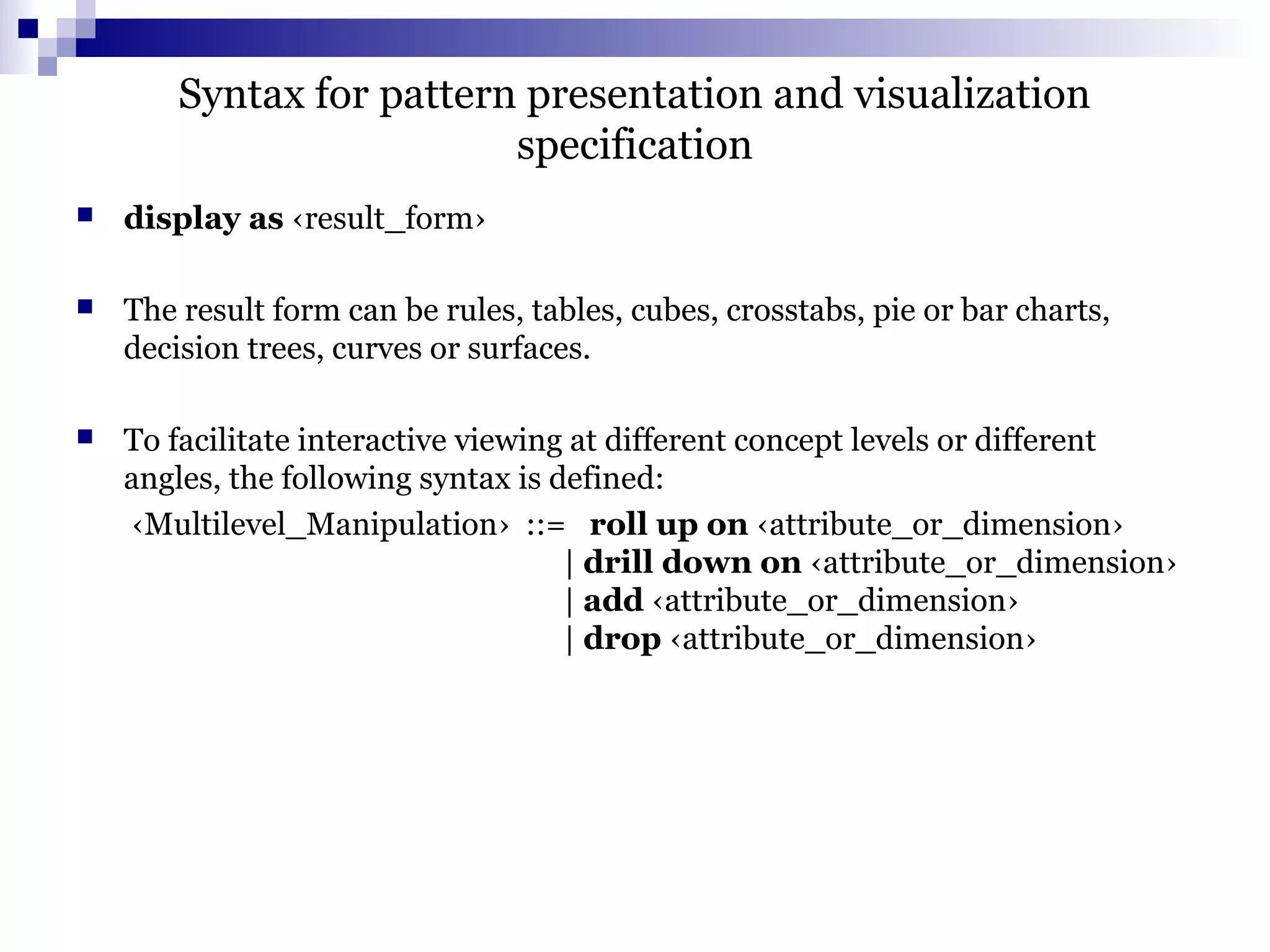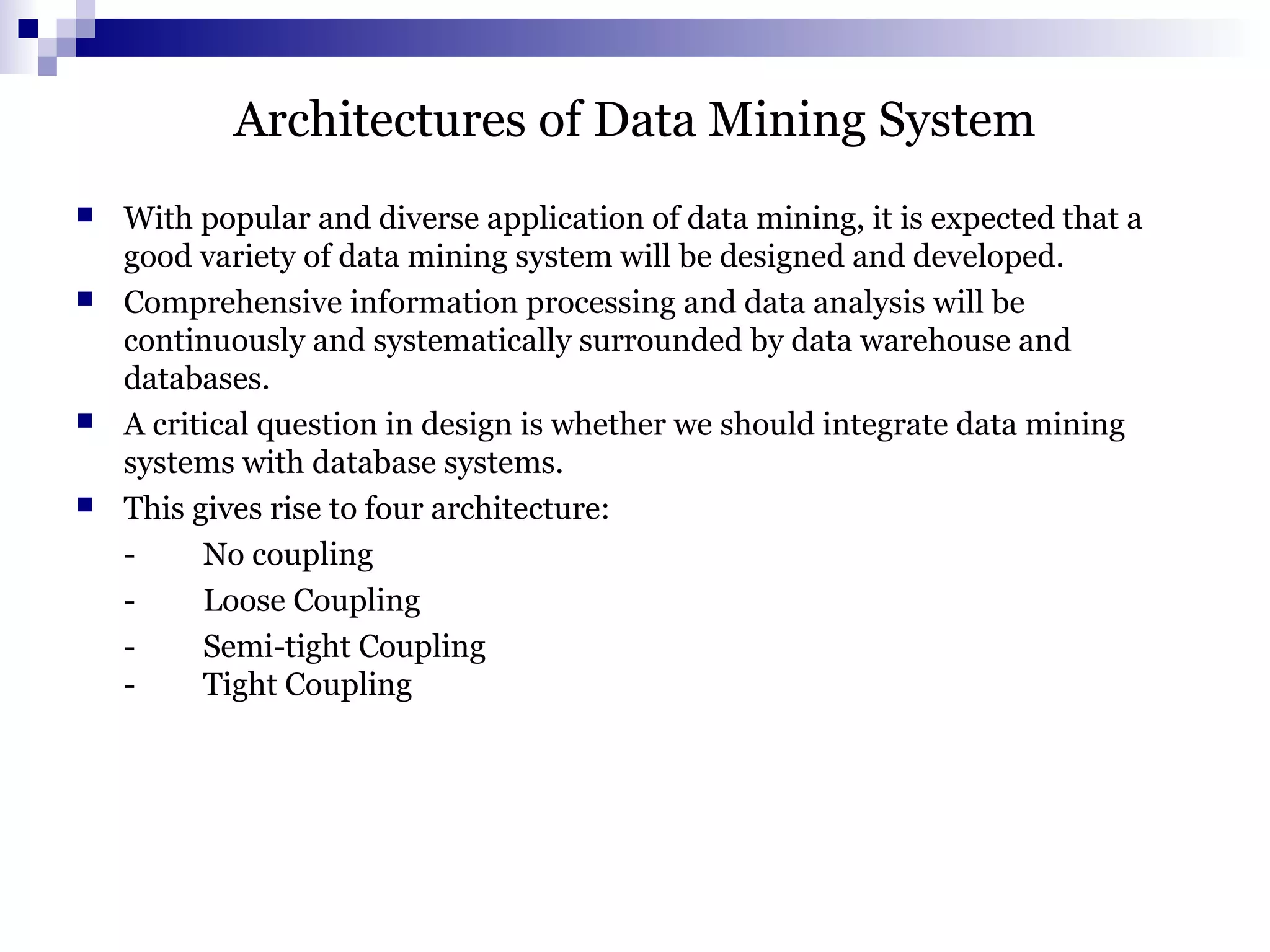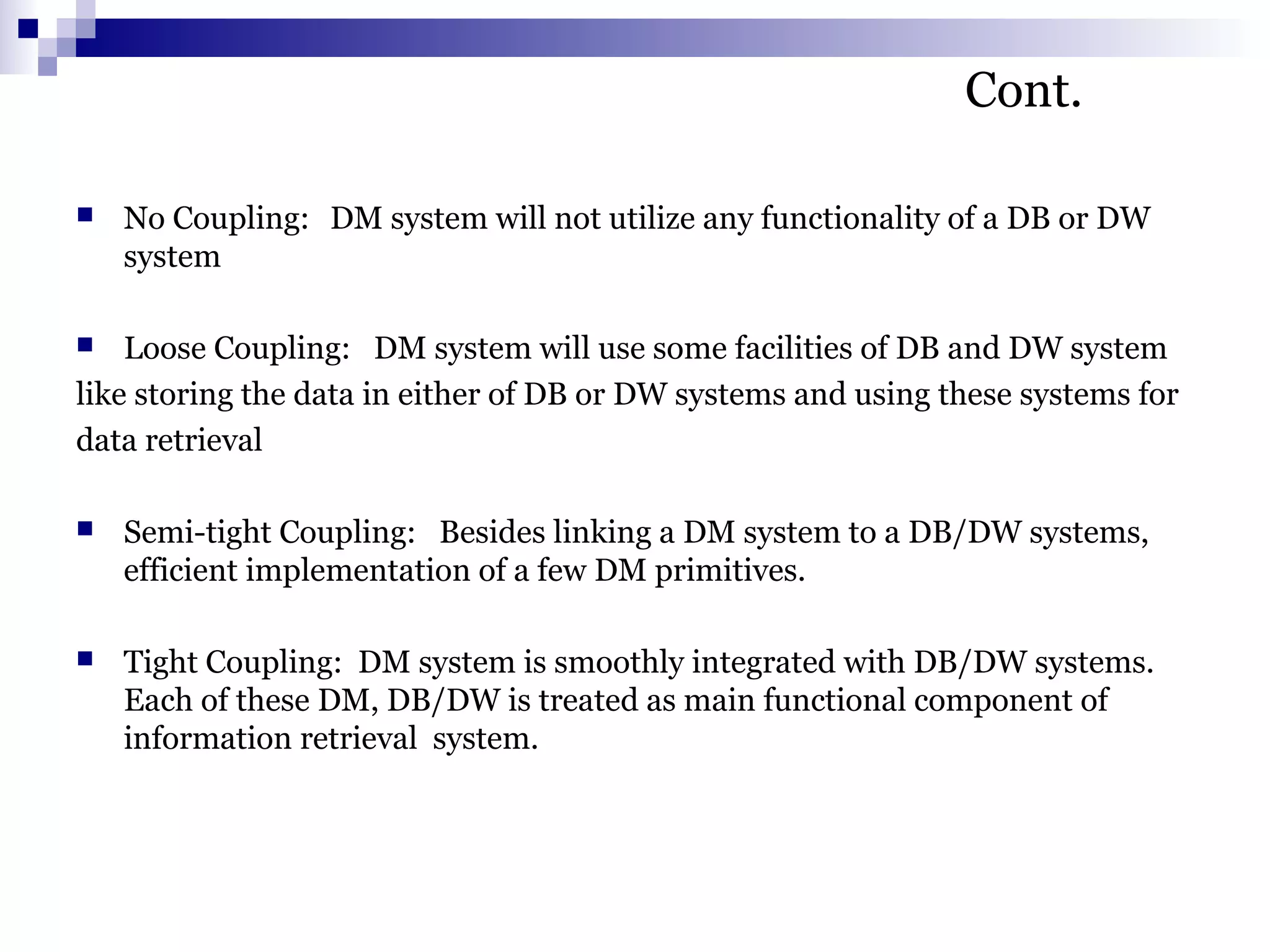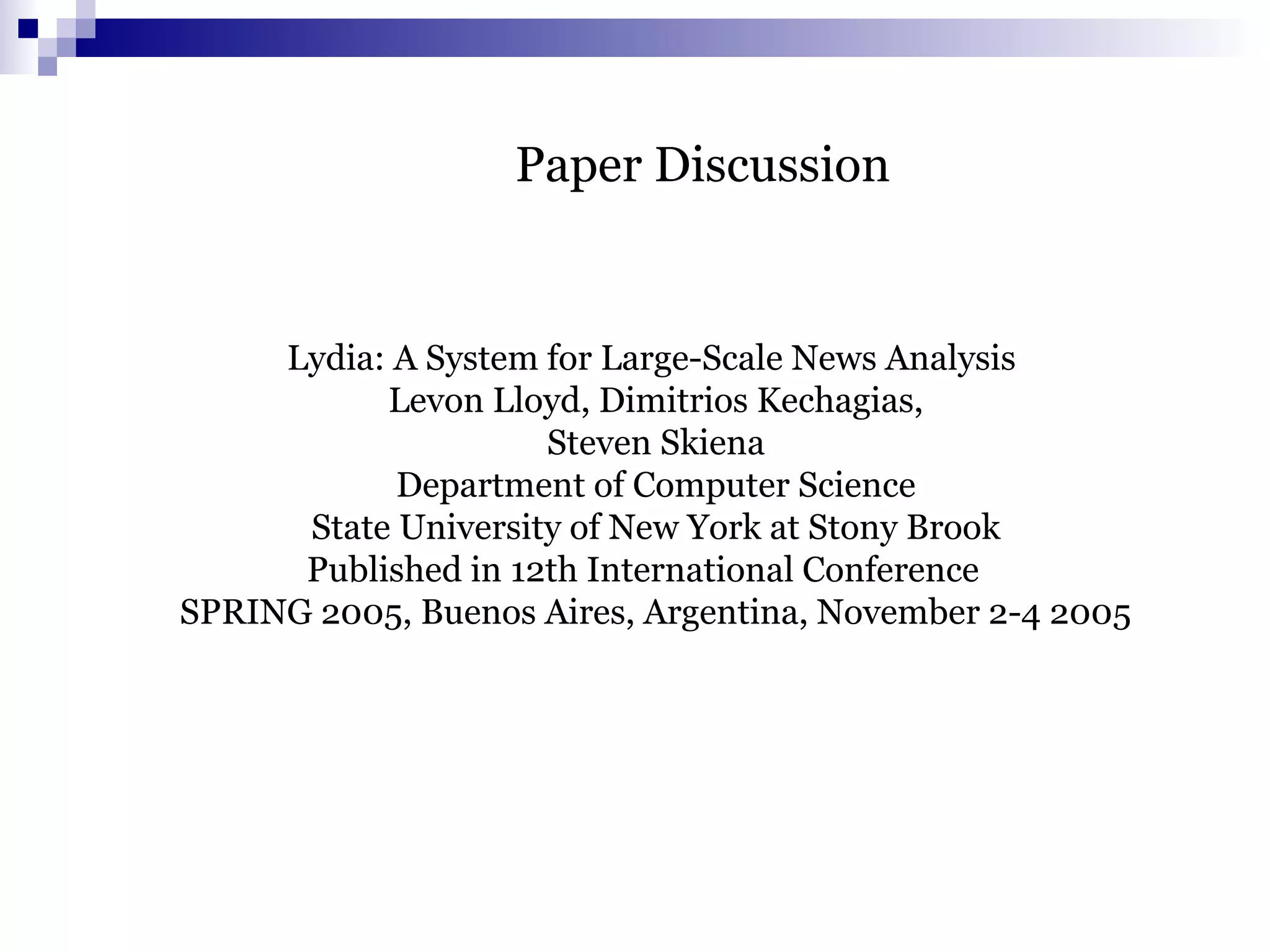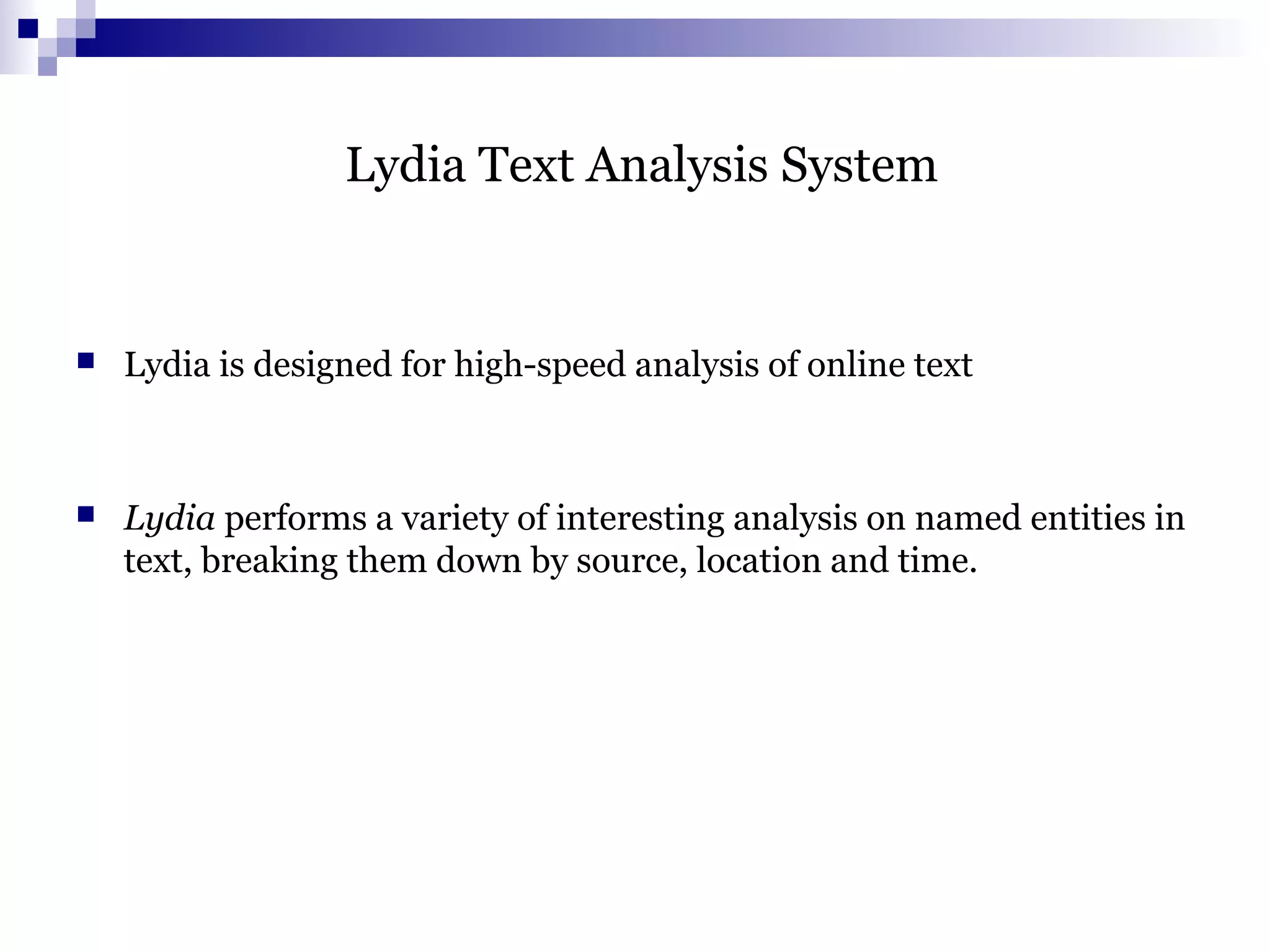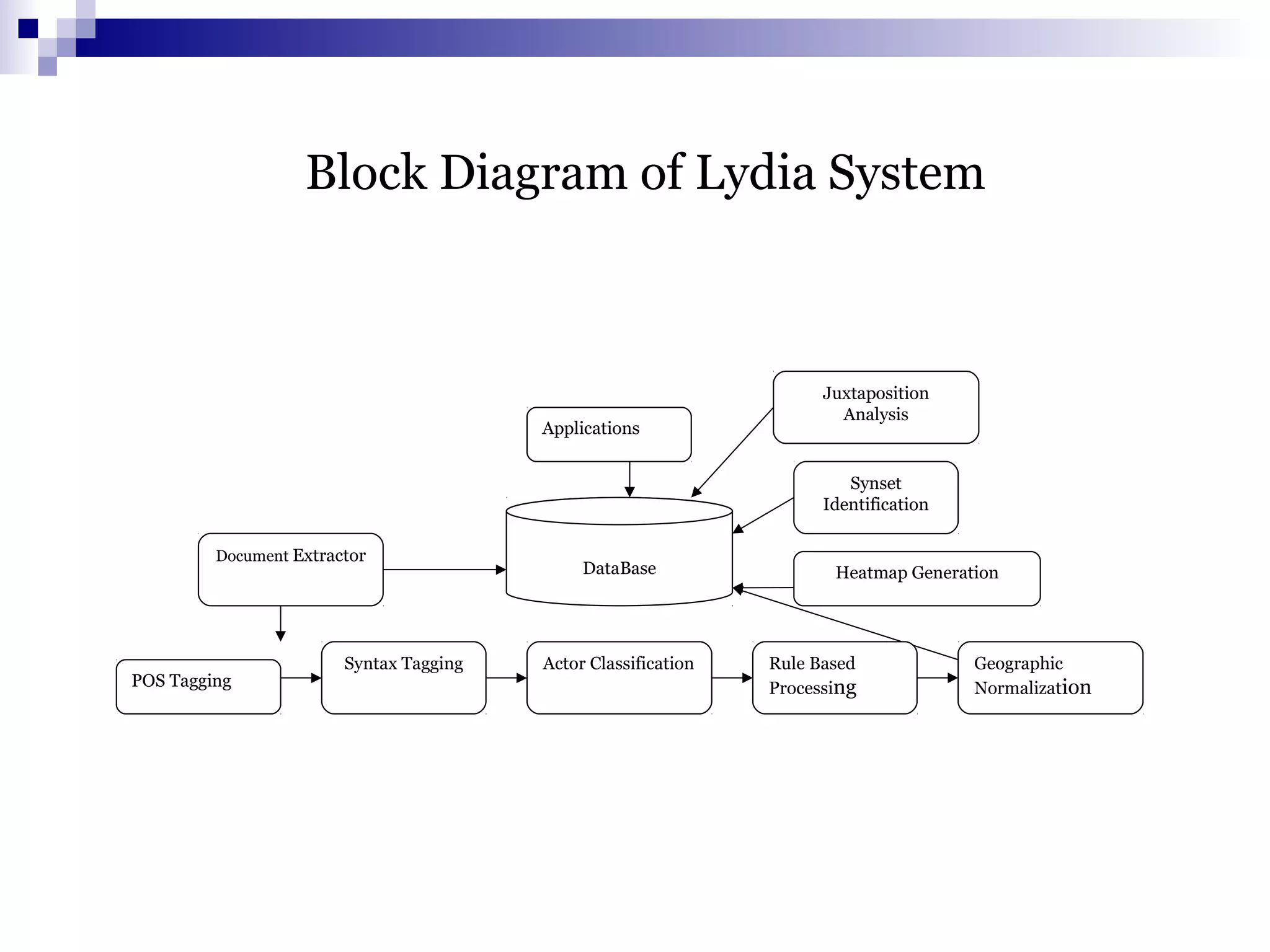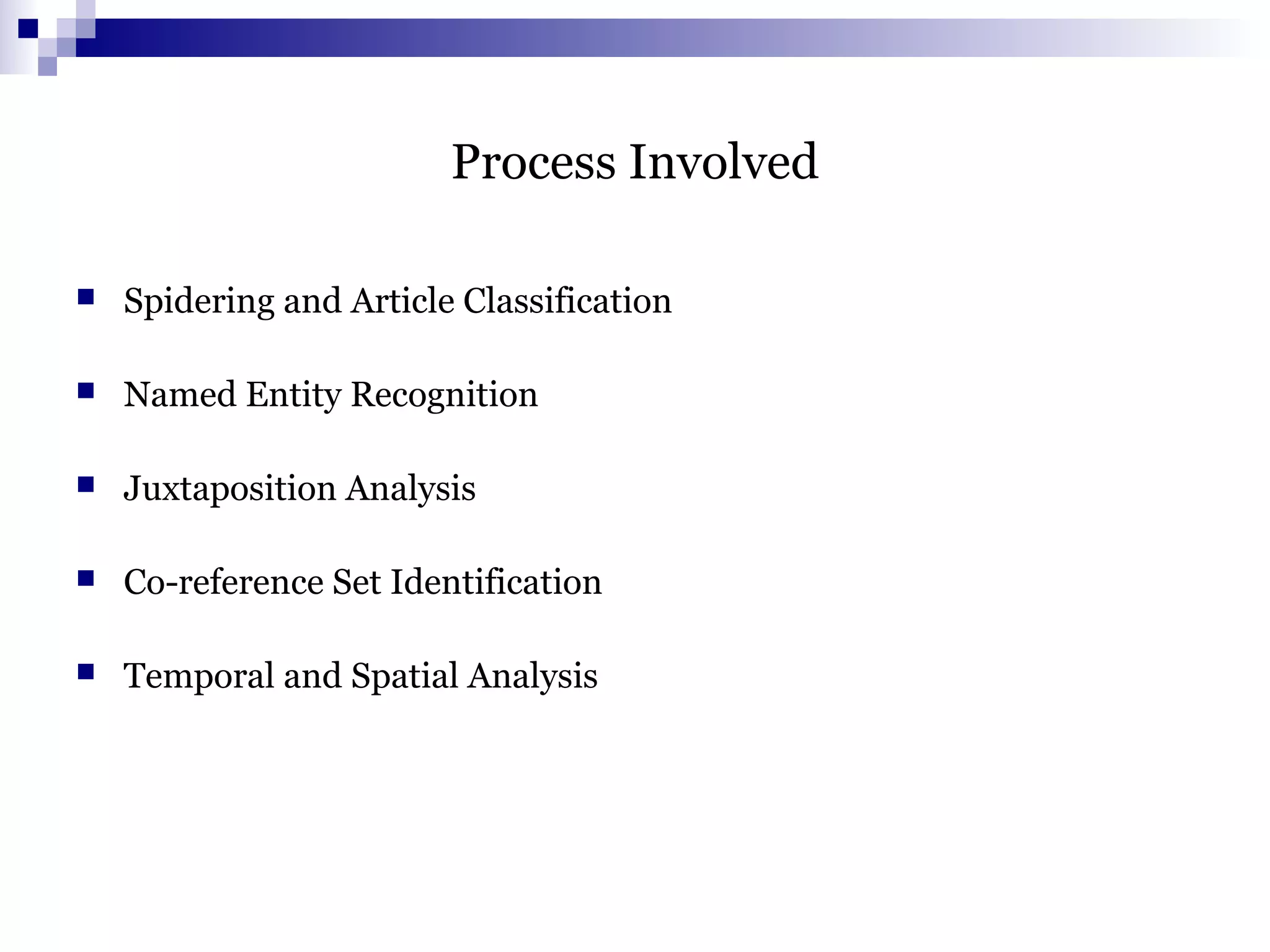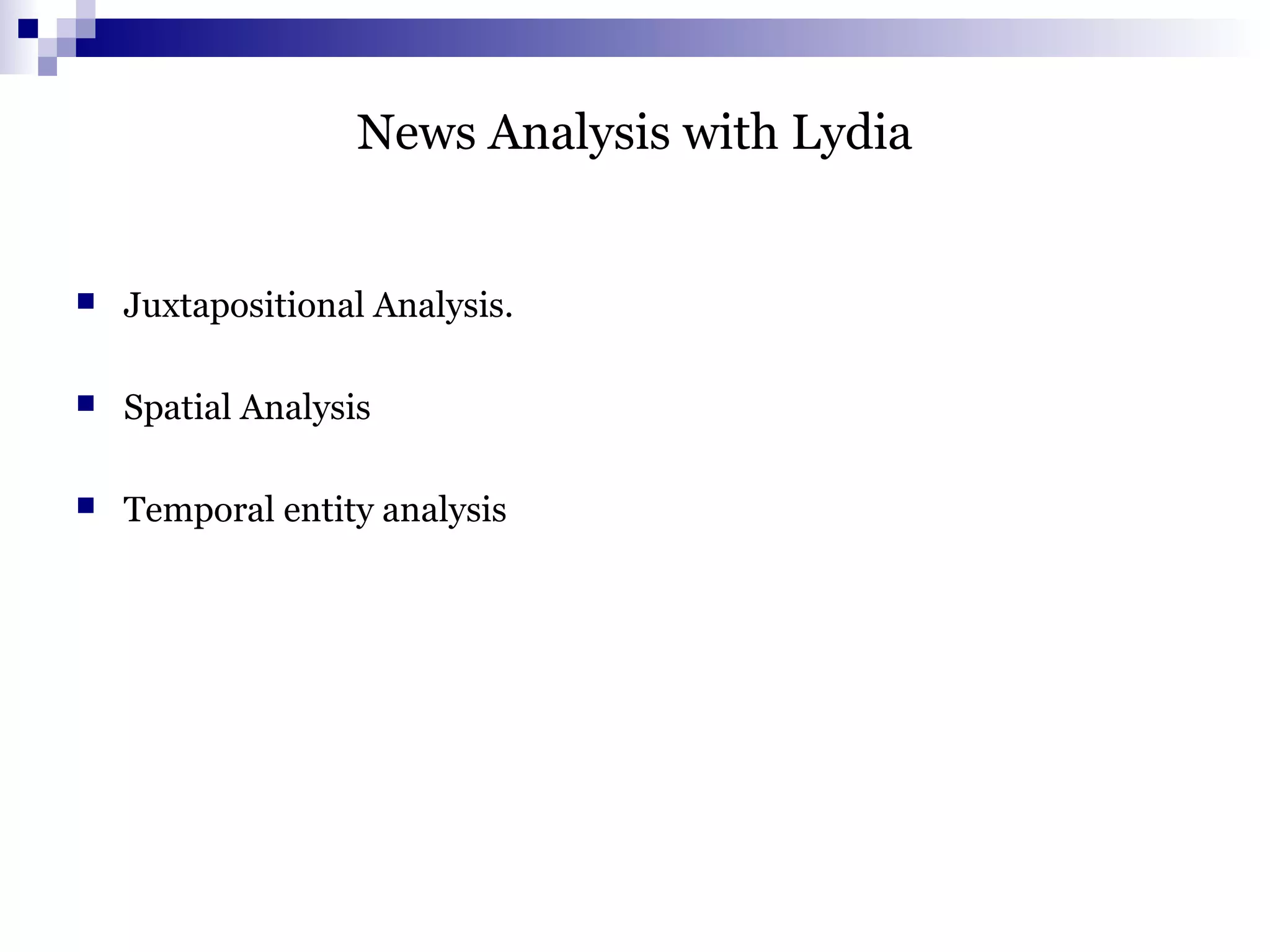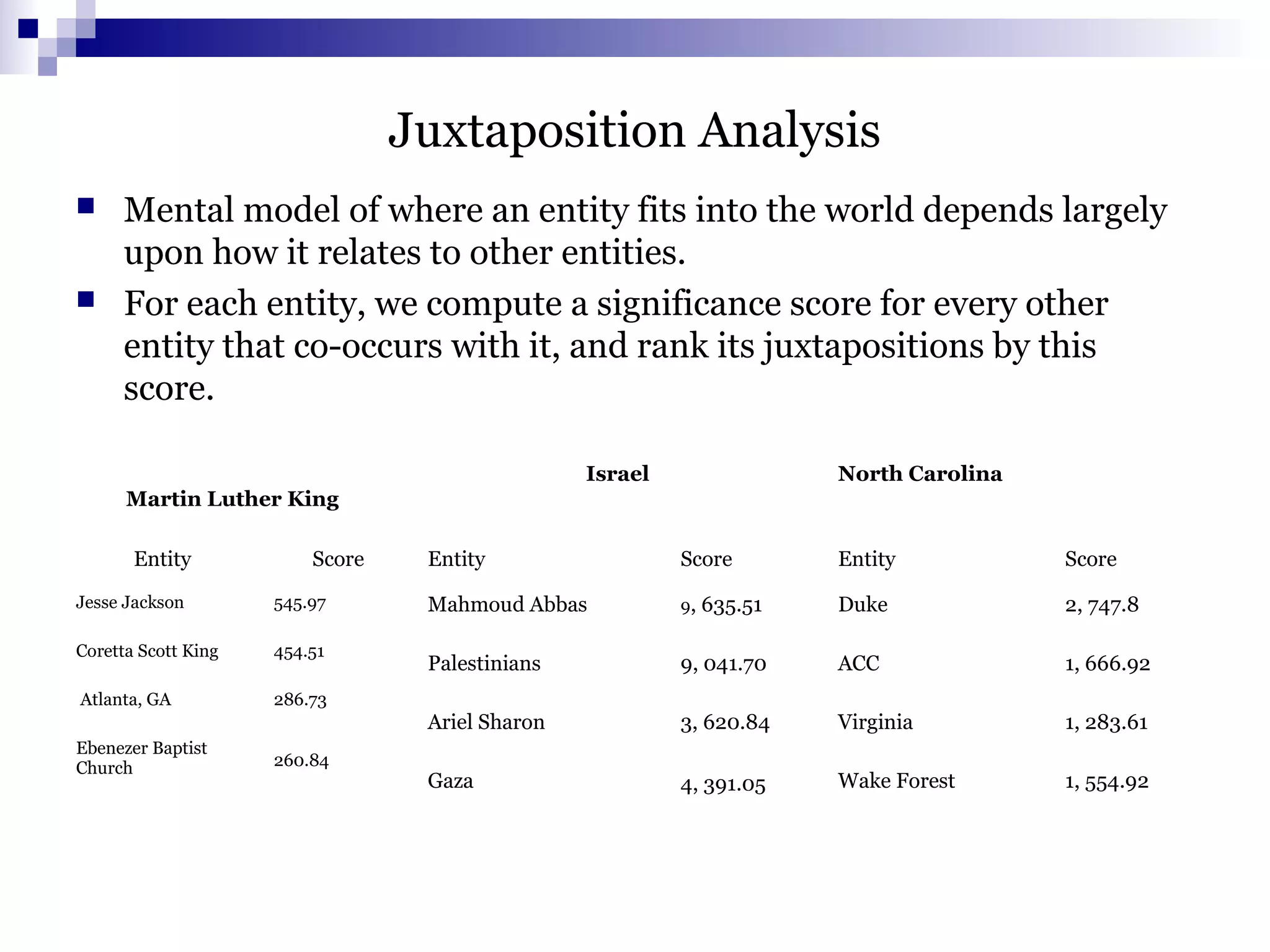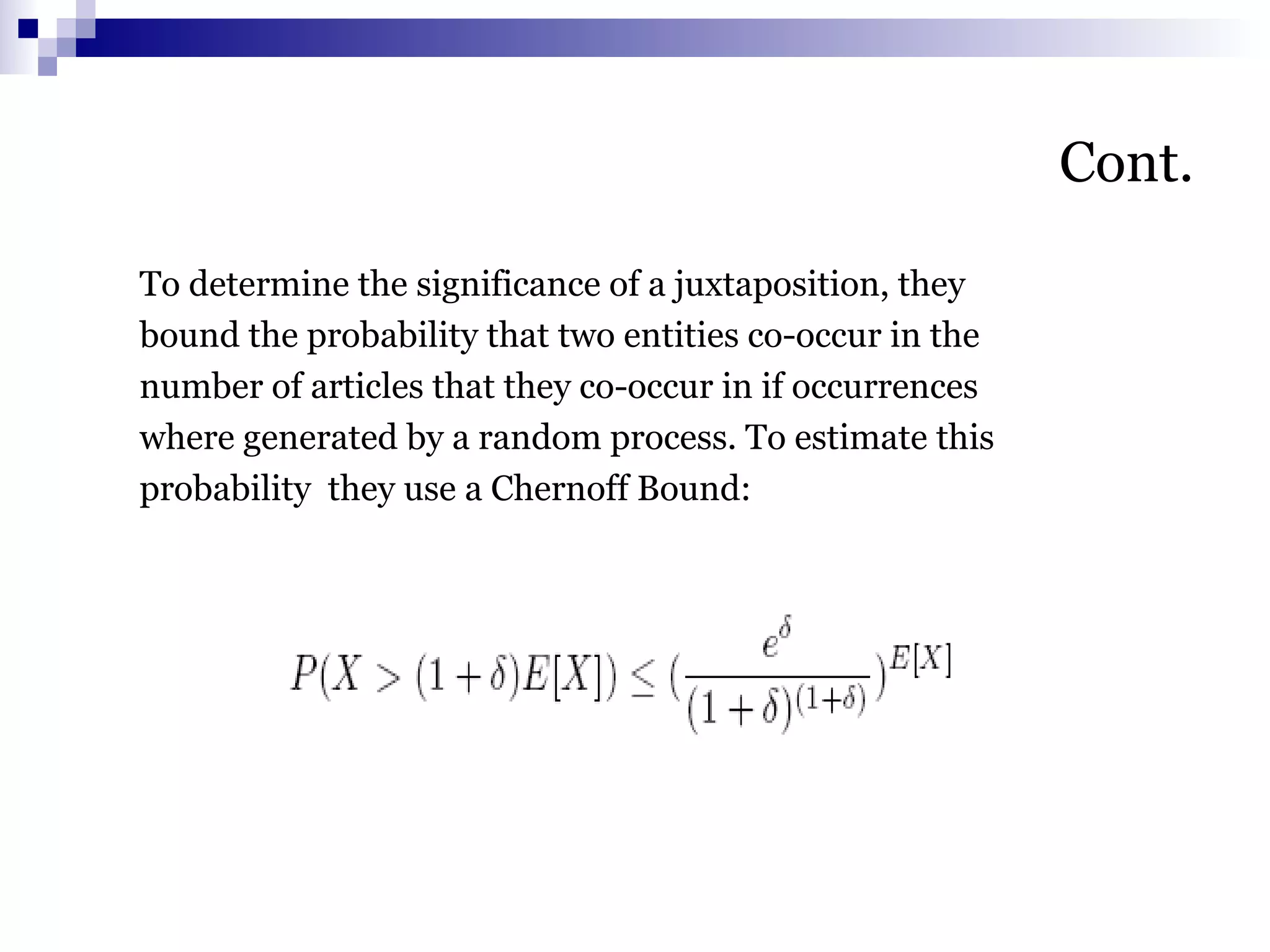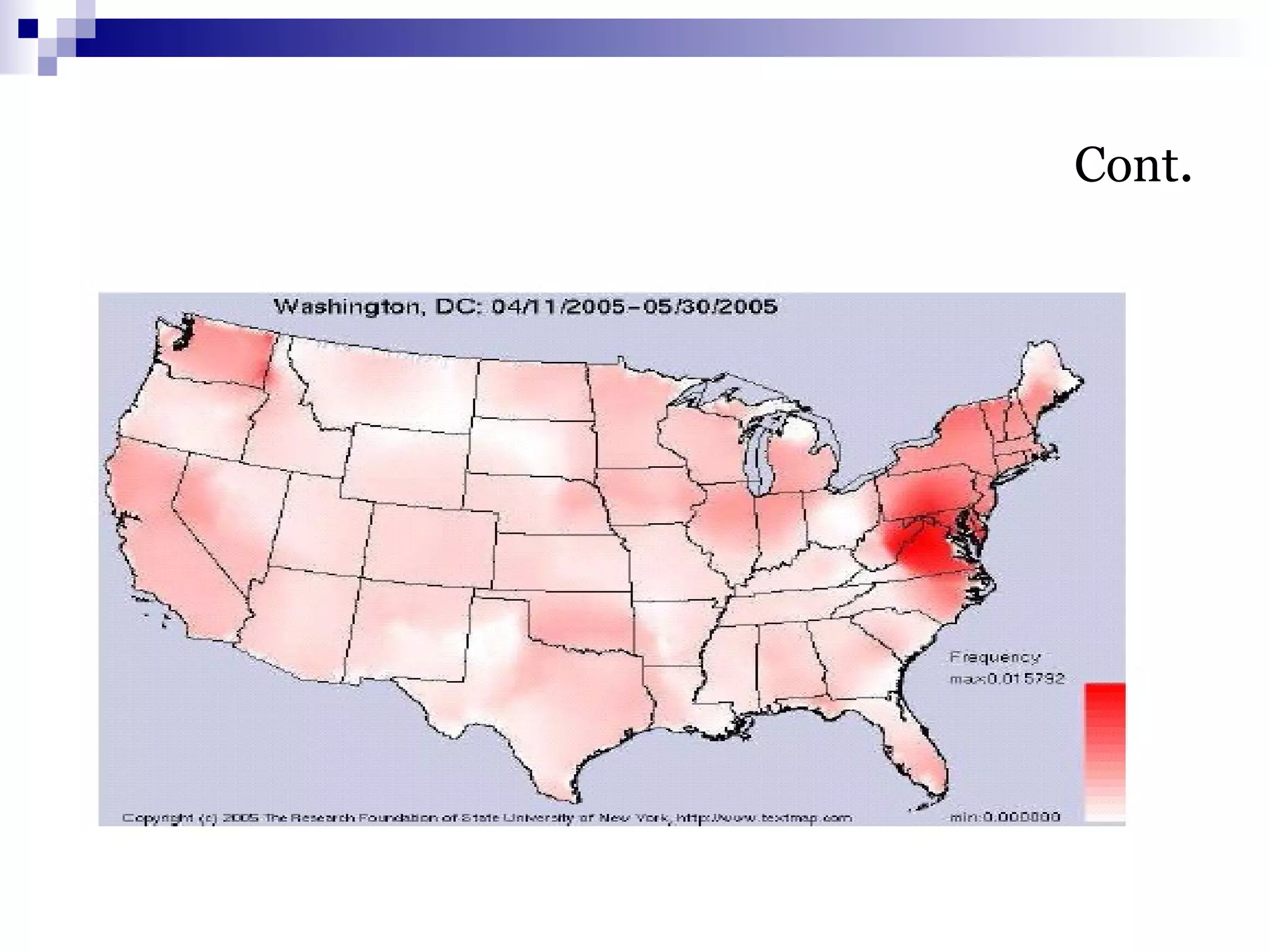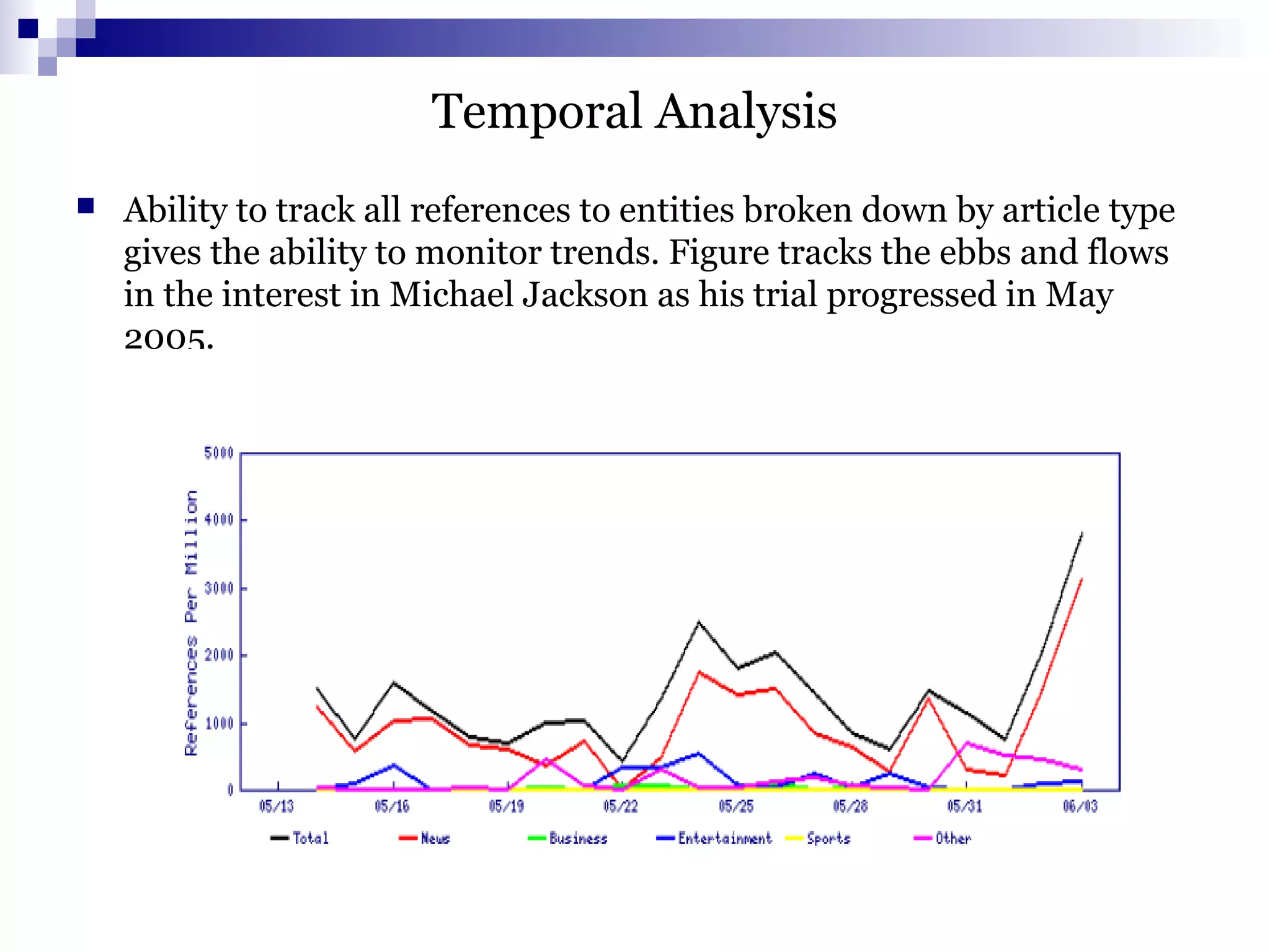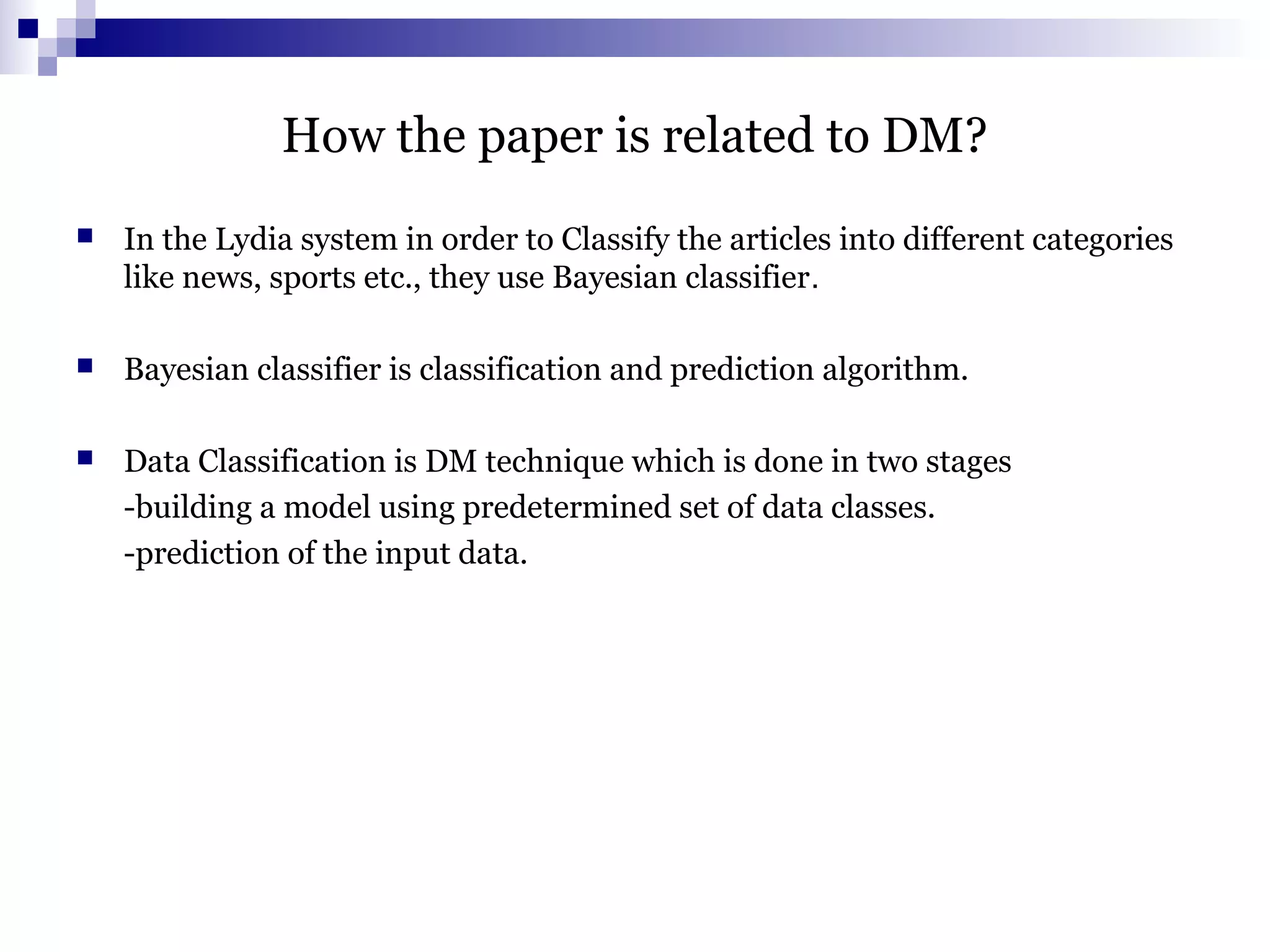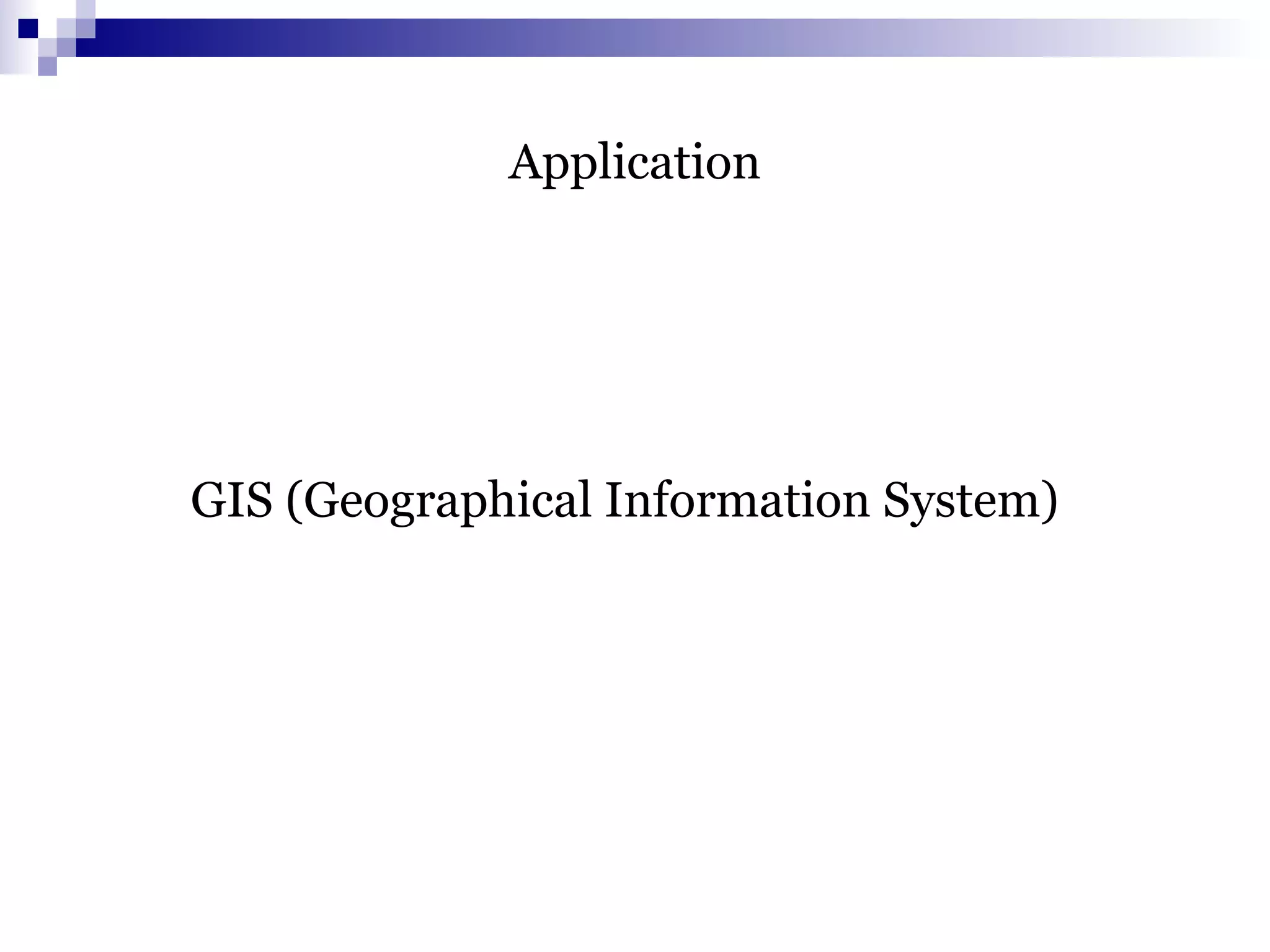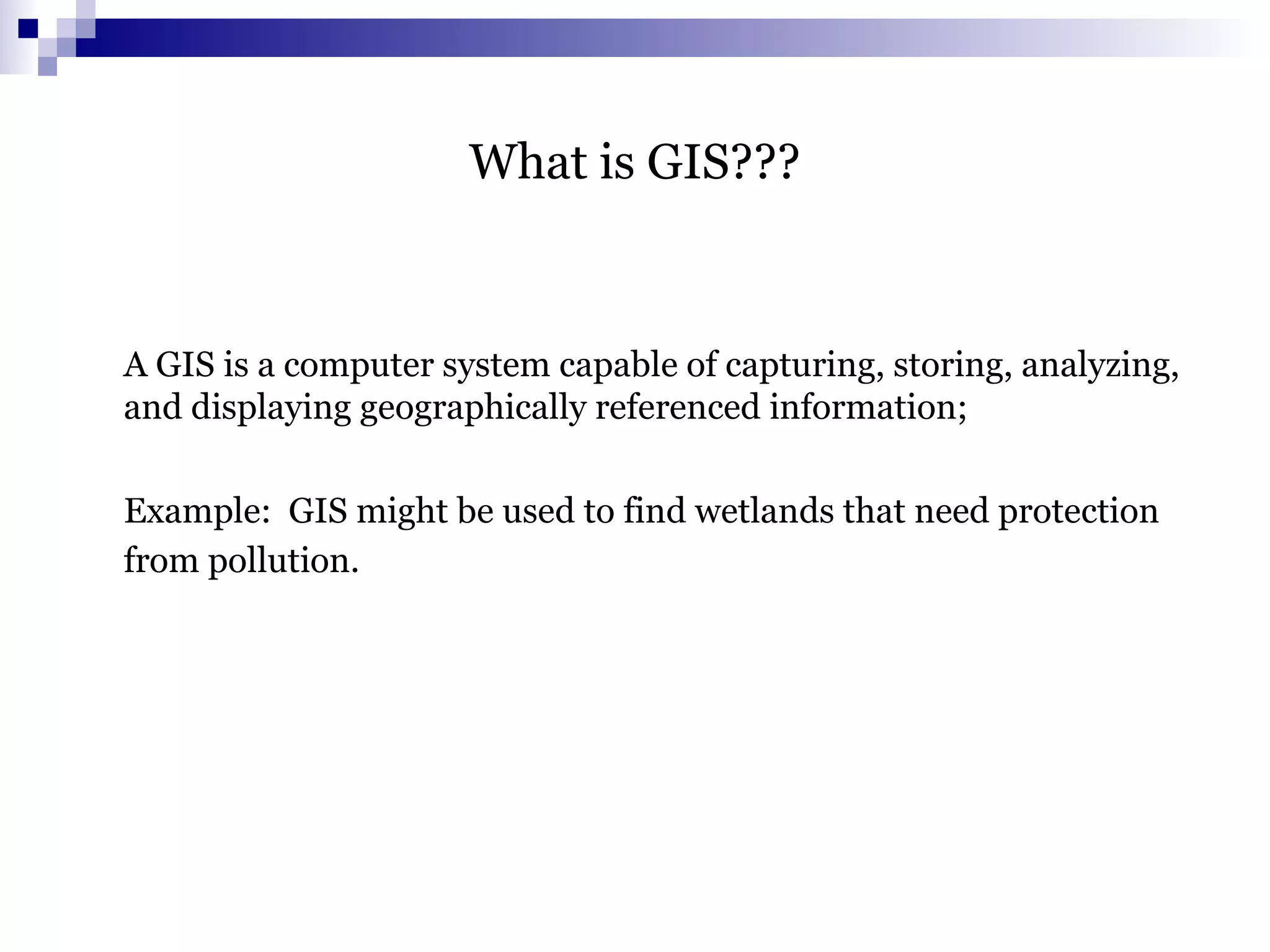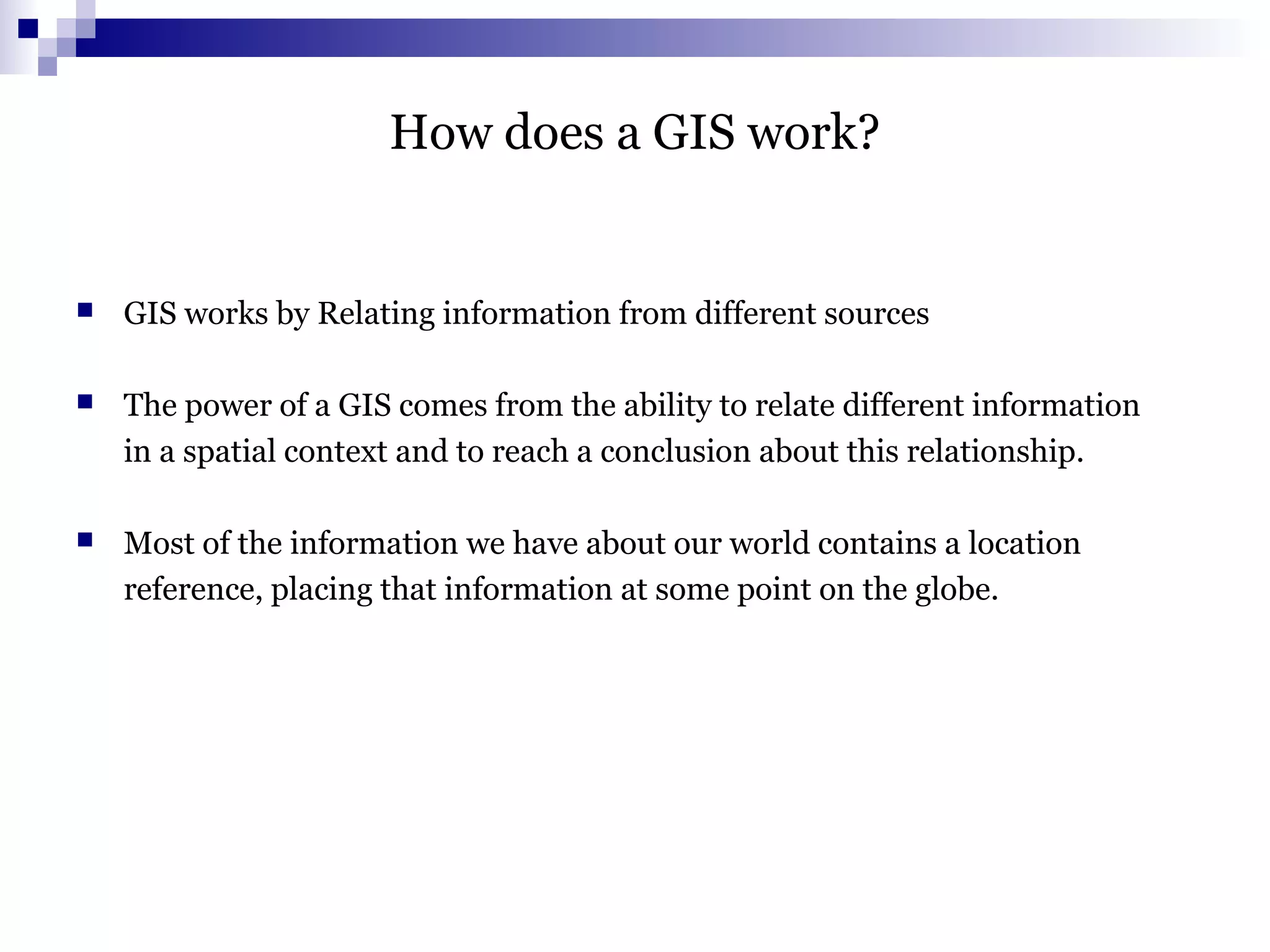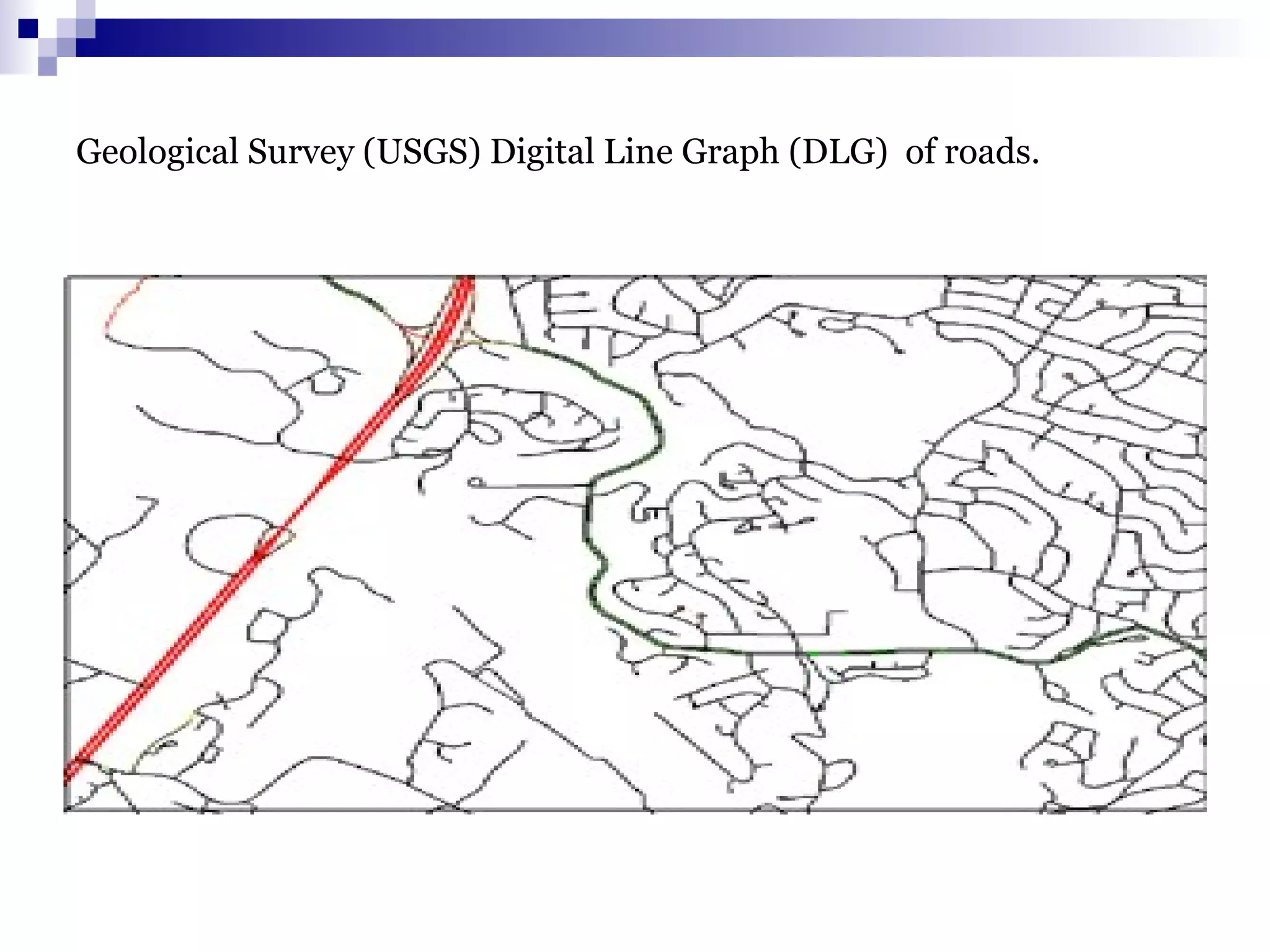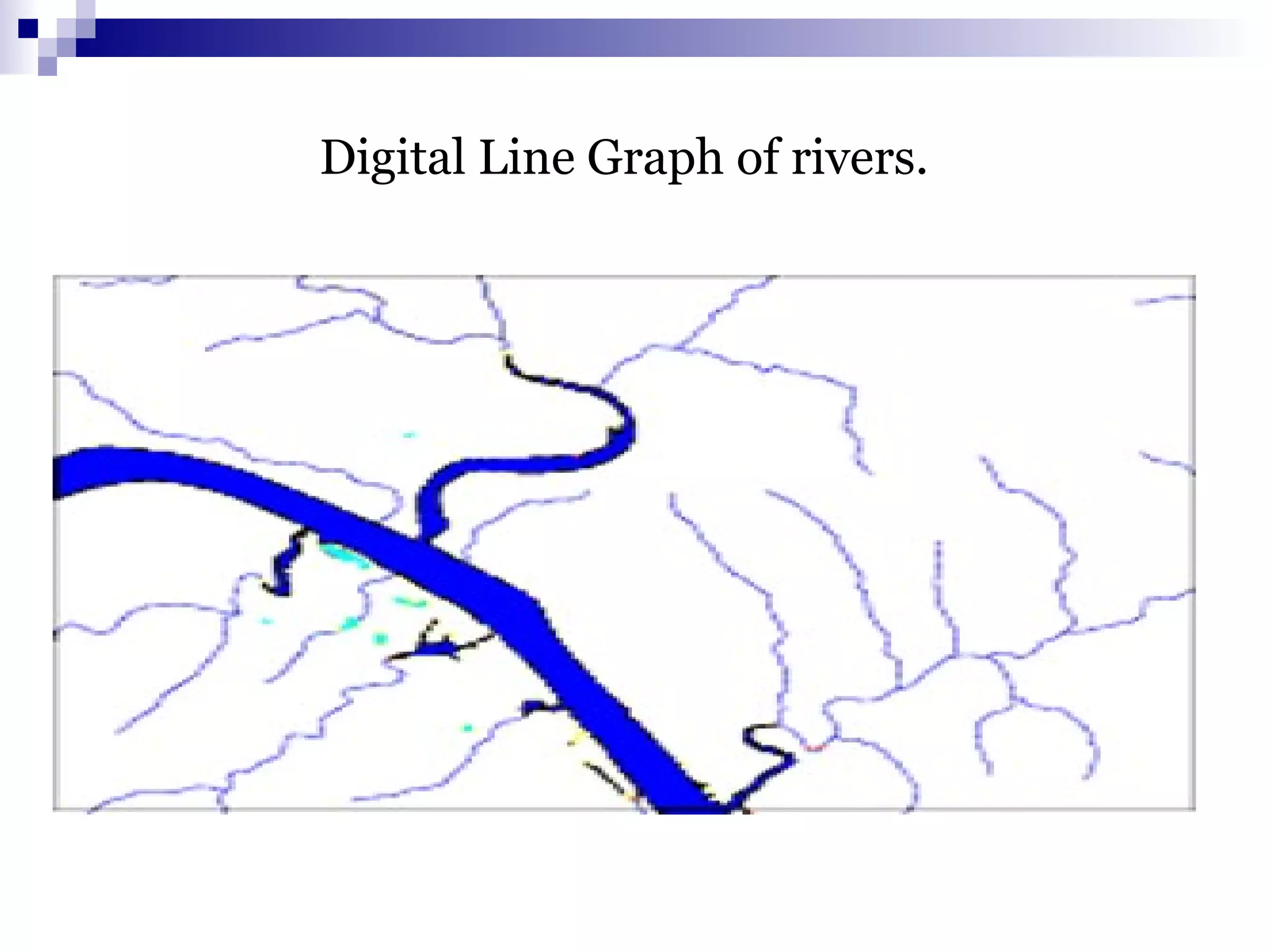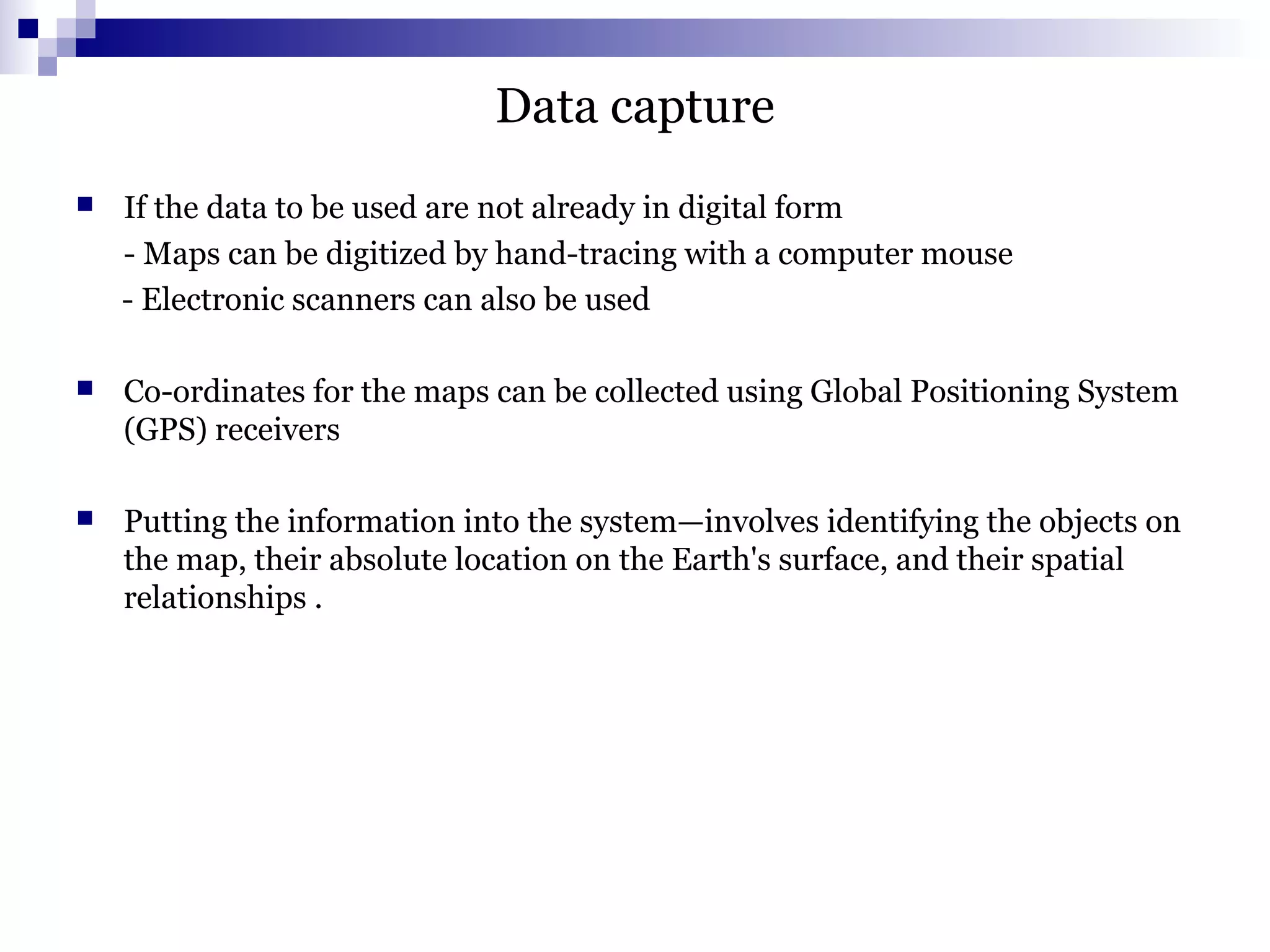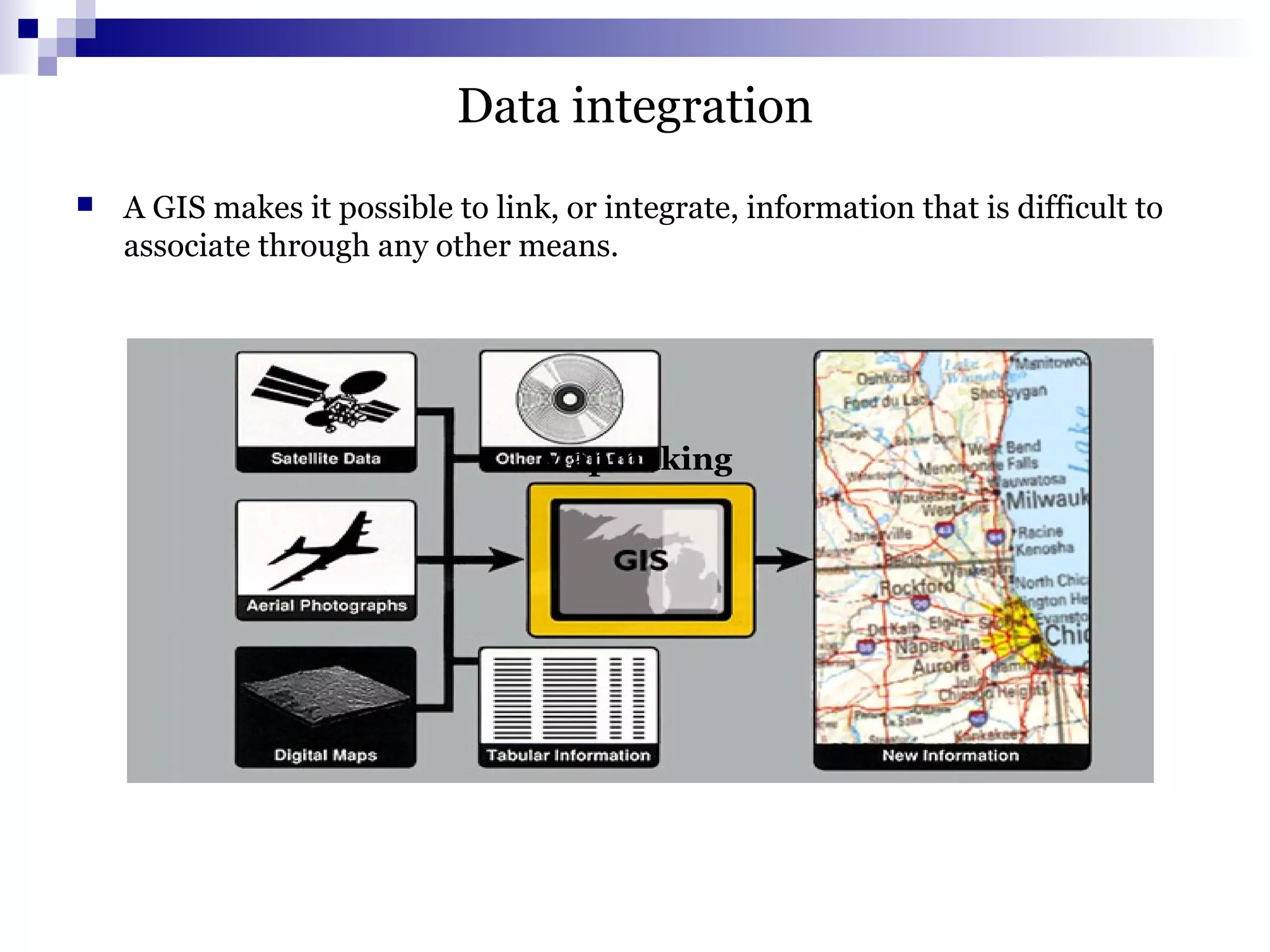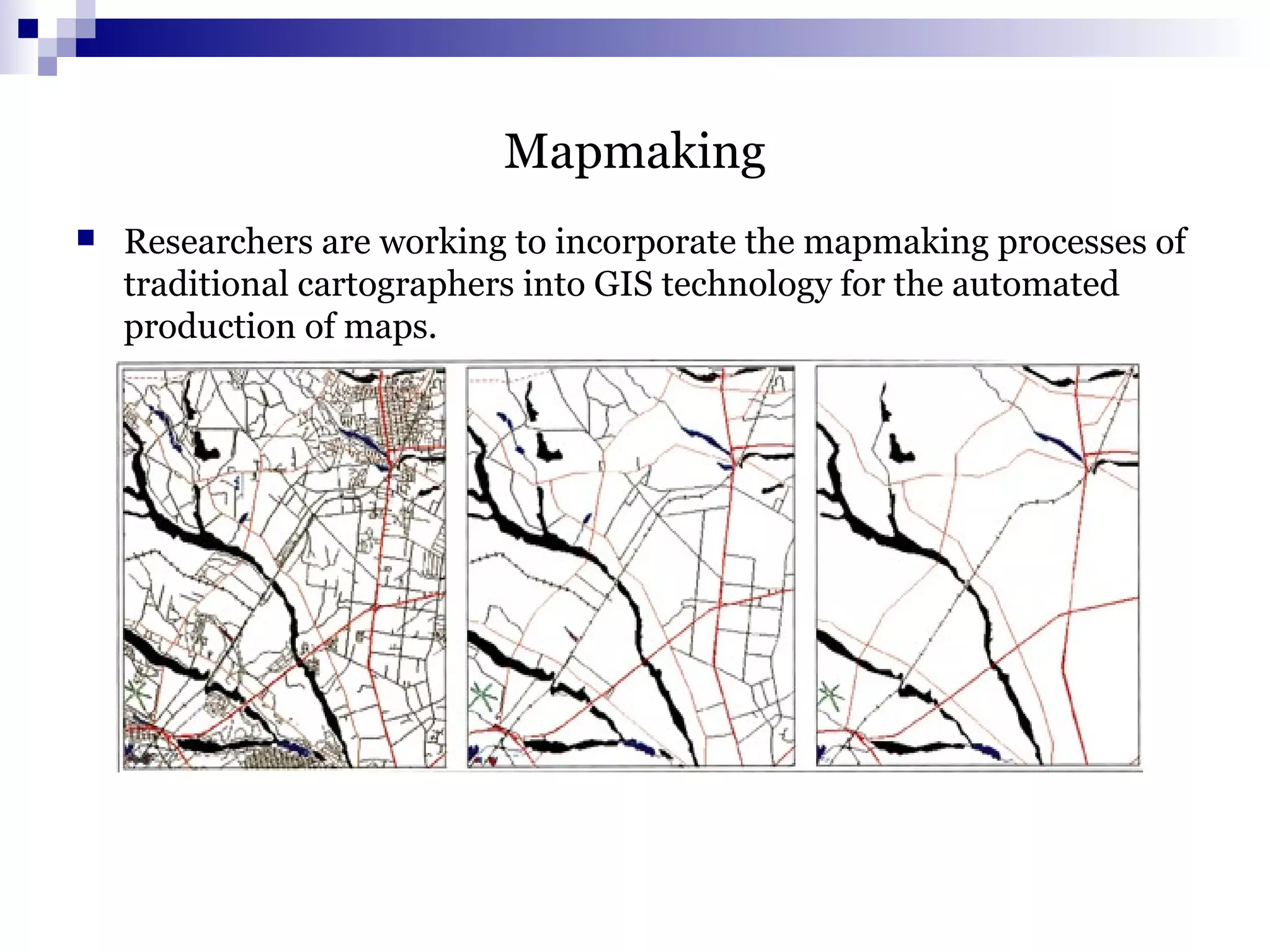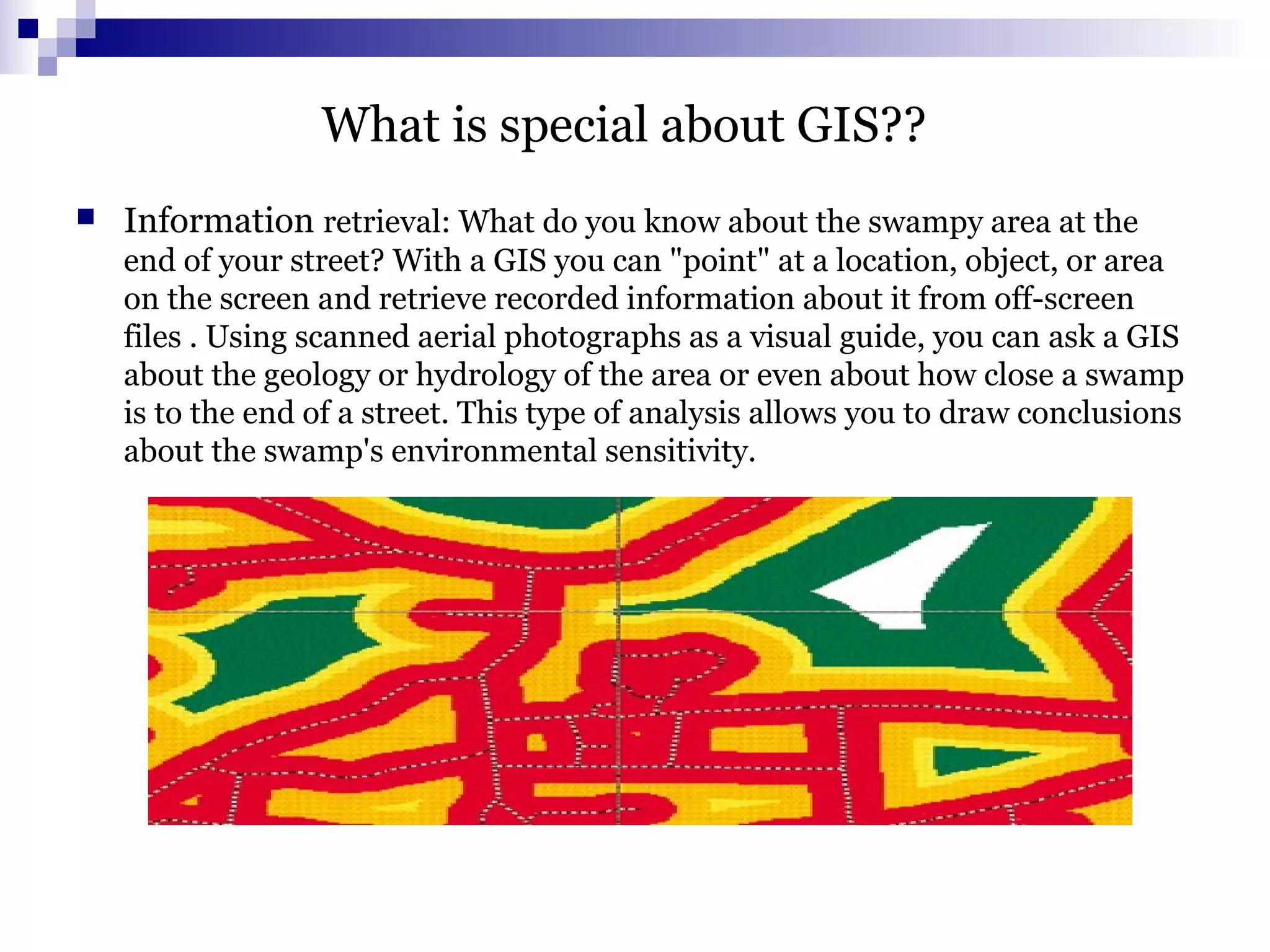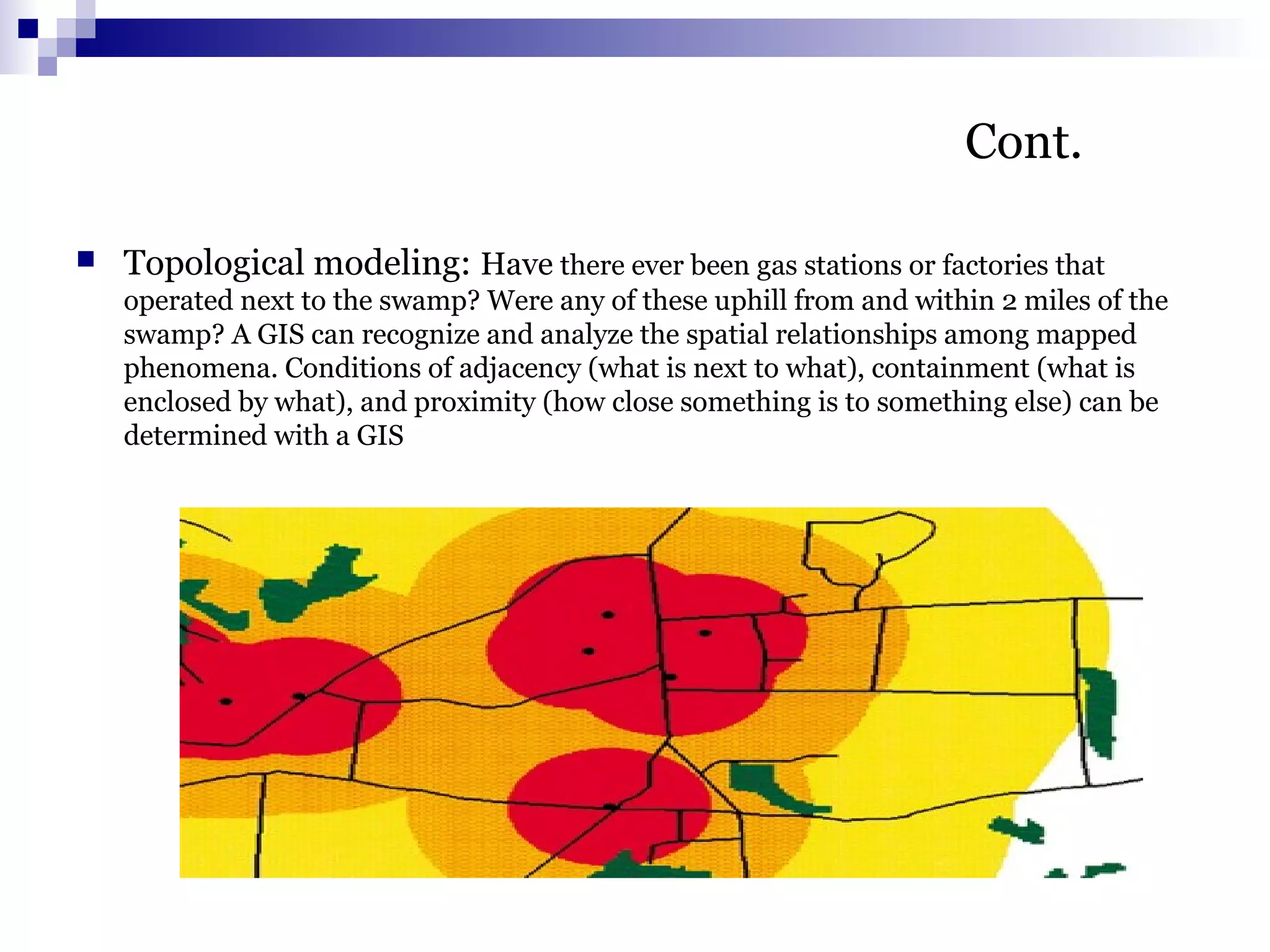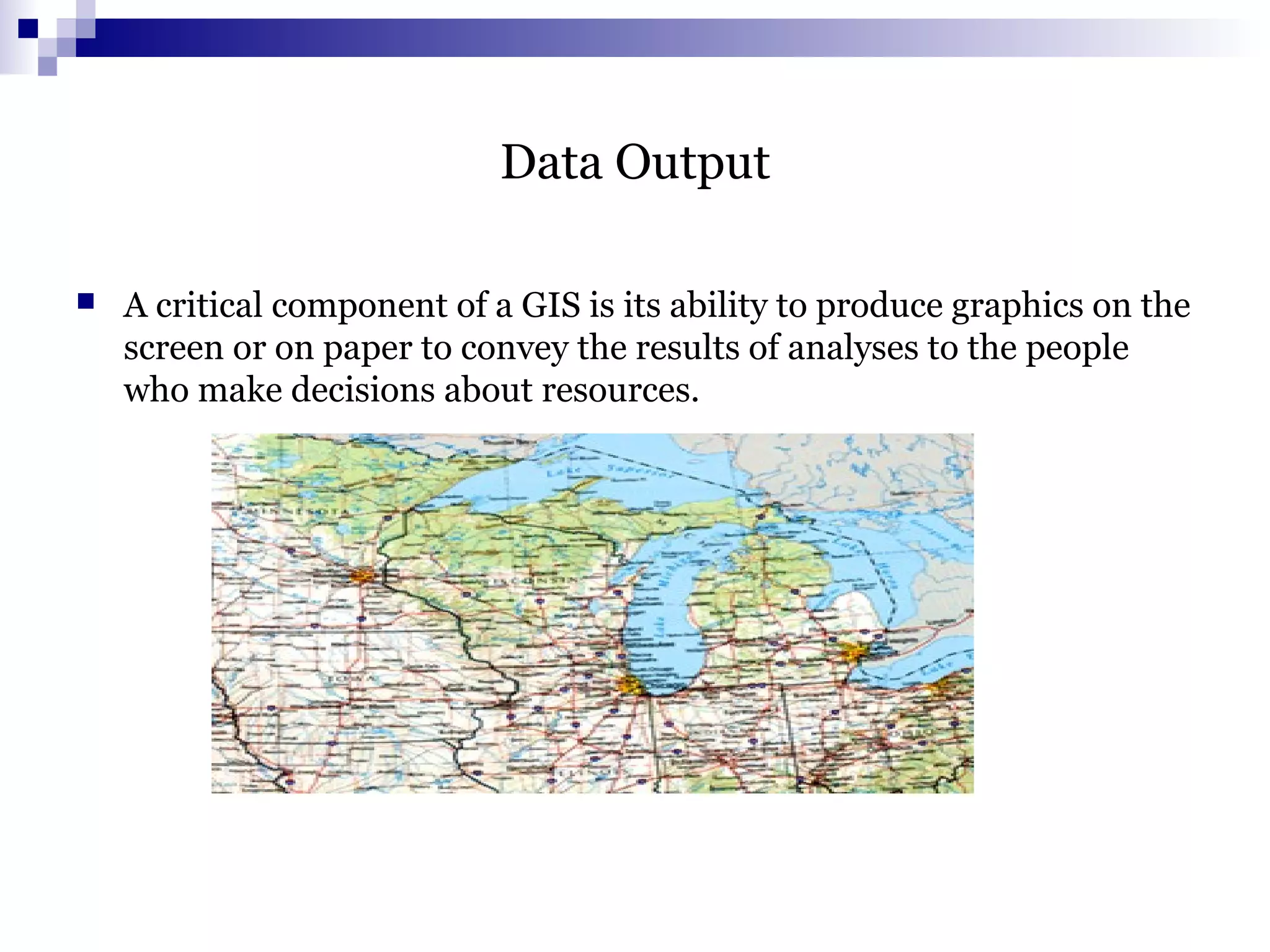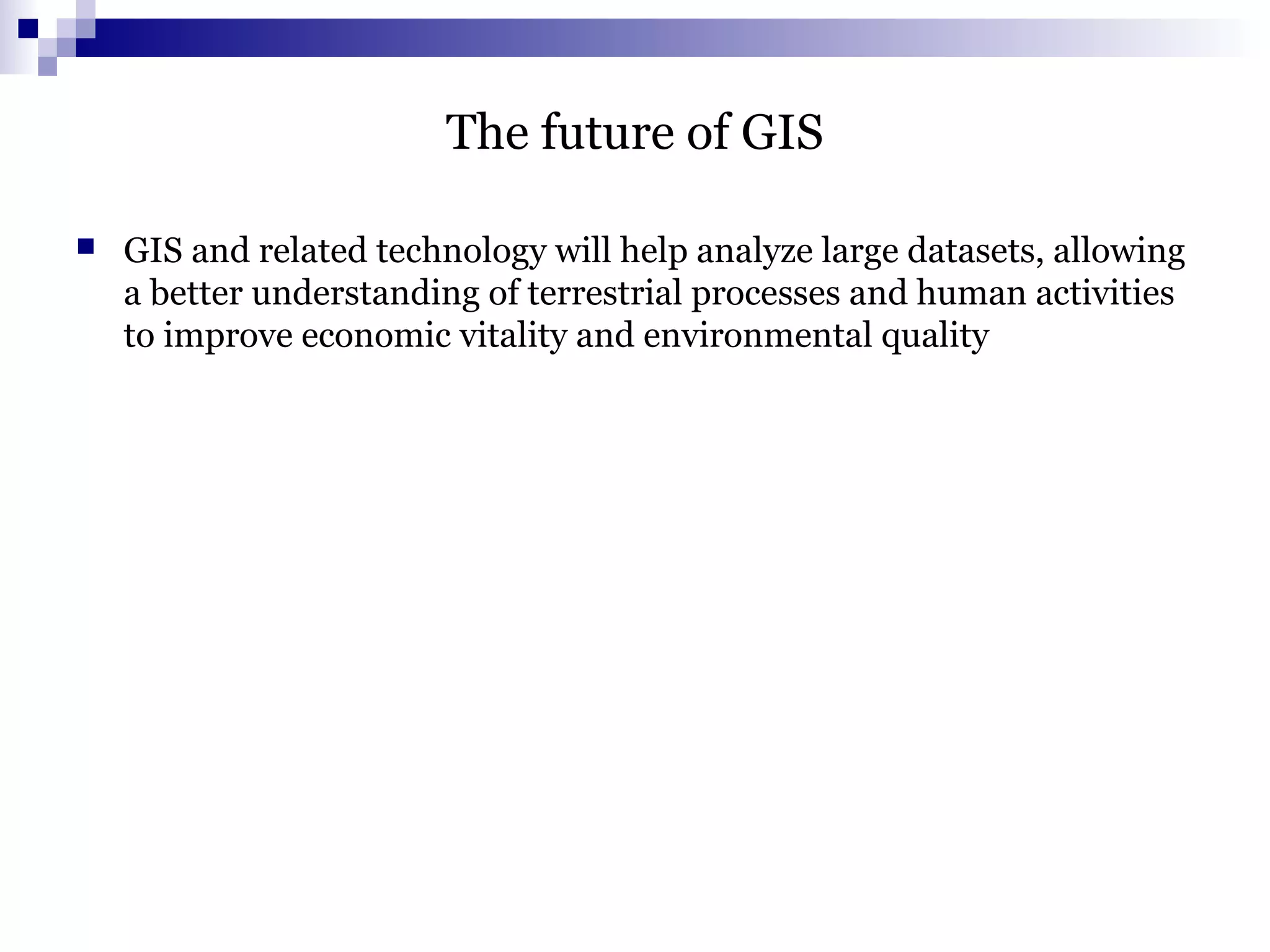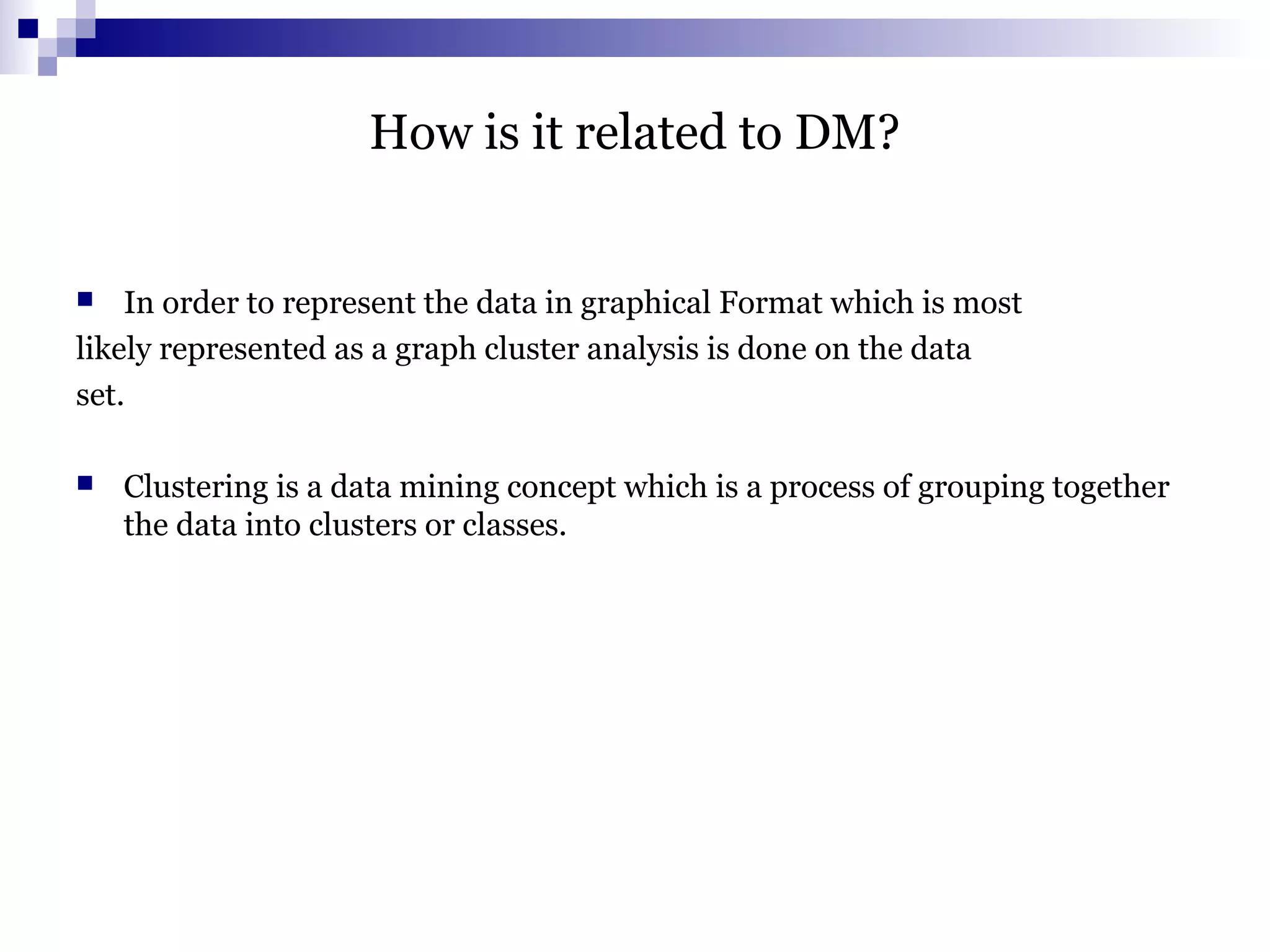The document discusses data mining primitives, languages, and system architectures. It describes the key components of a typical data mining system including the data mining engine, database/data warehouse, knowledge base, and graphical user interface. It also covers data mining primitives such as task-relevant data specification, background knowledge, and interestingness measures. Data mining query languages and different system architectures are also summarized.
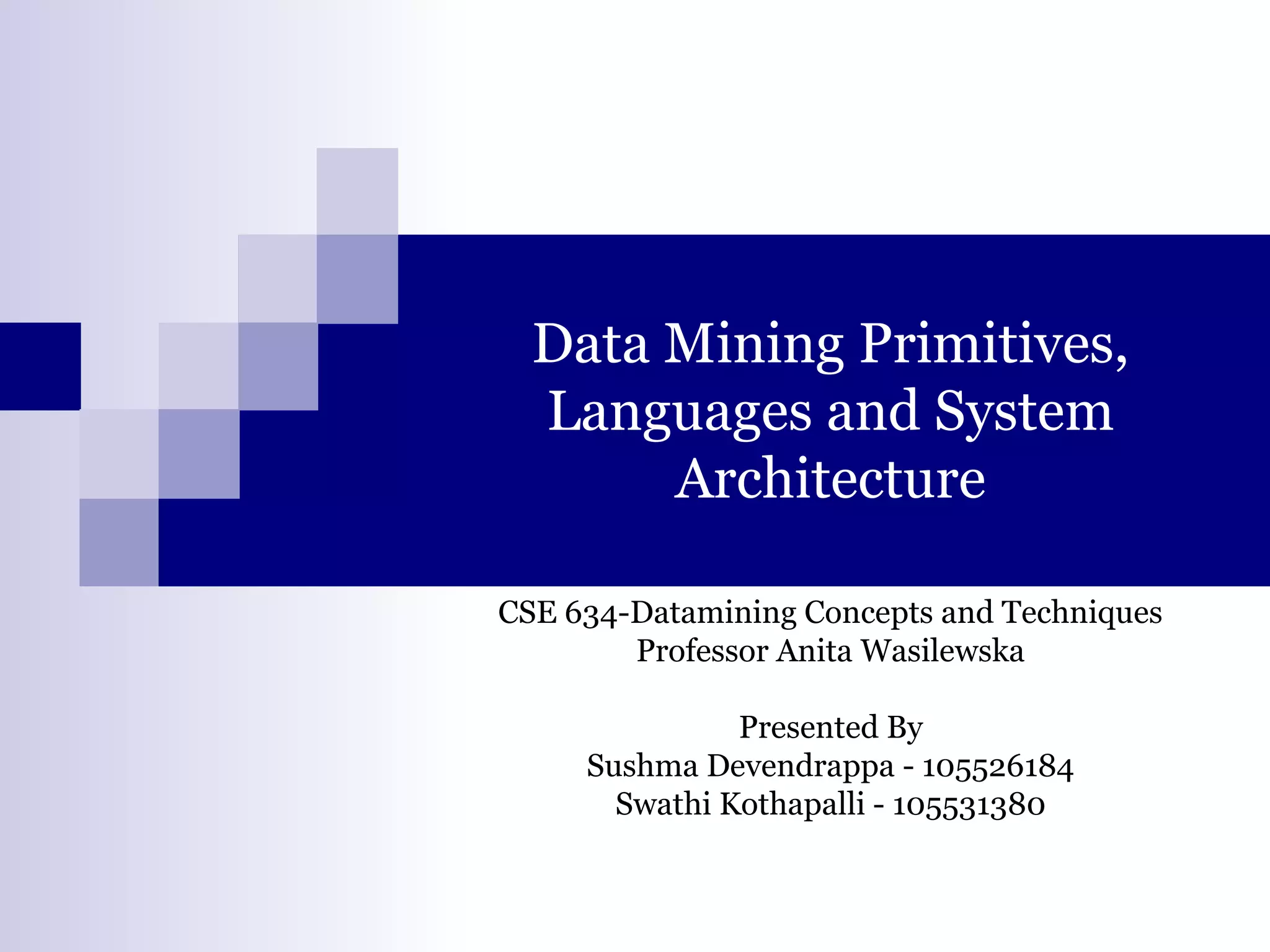
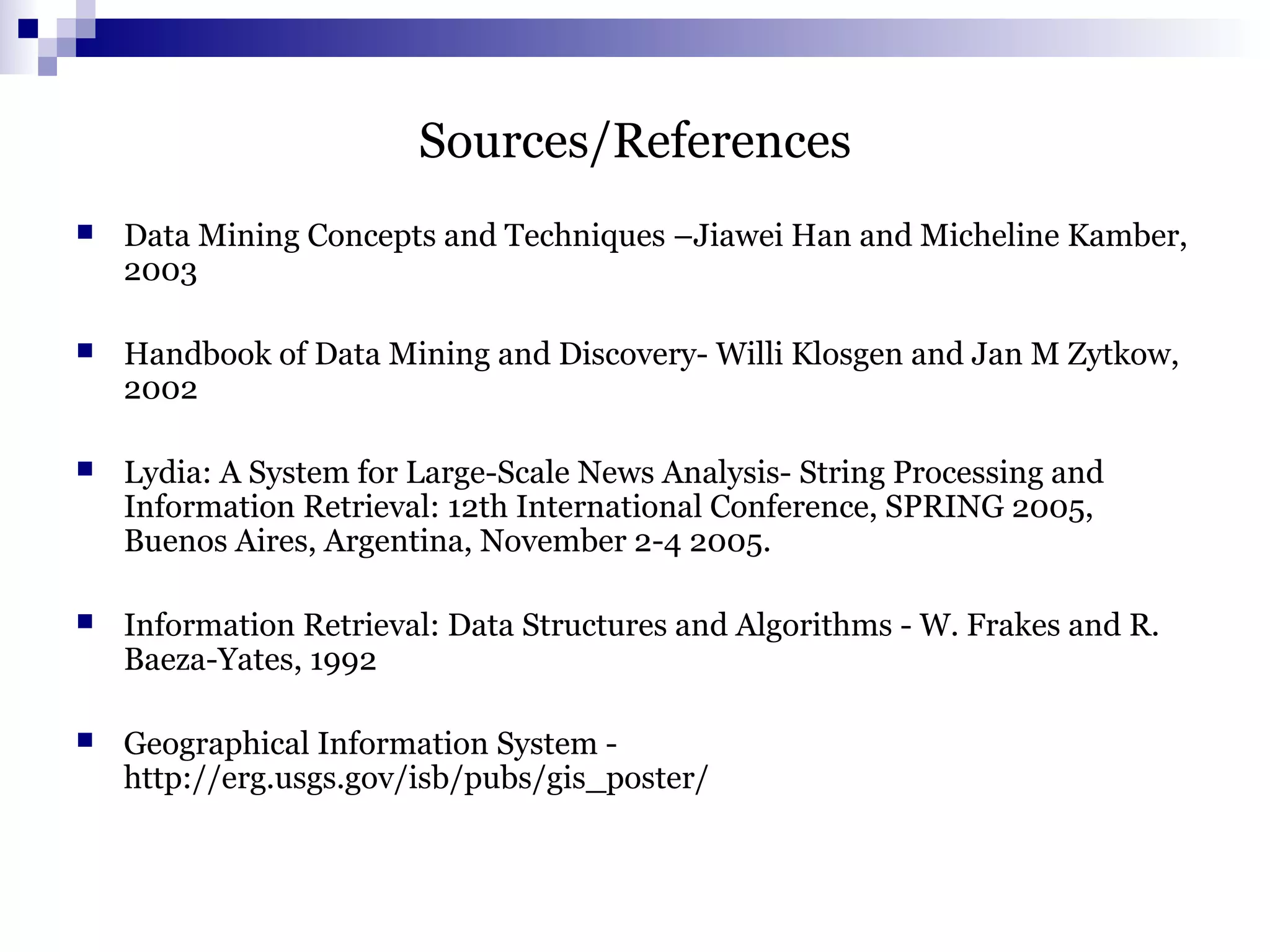
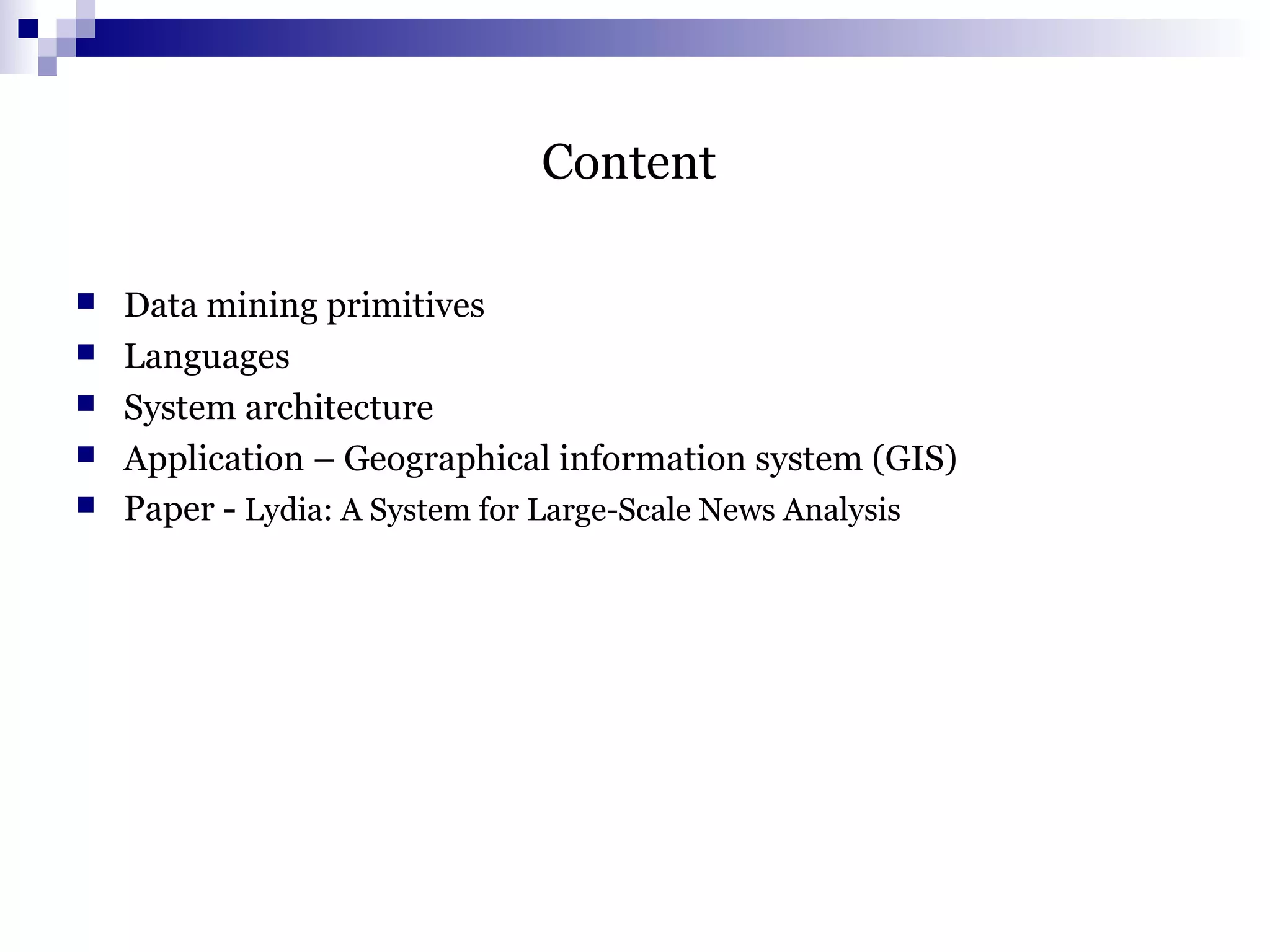
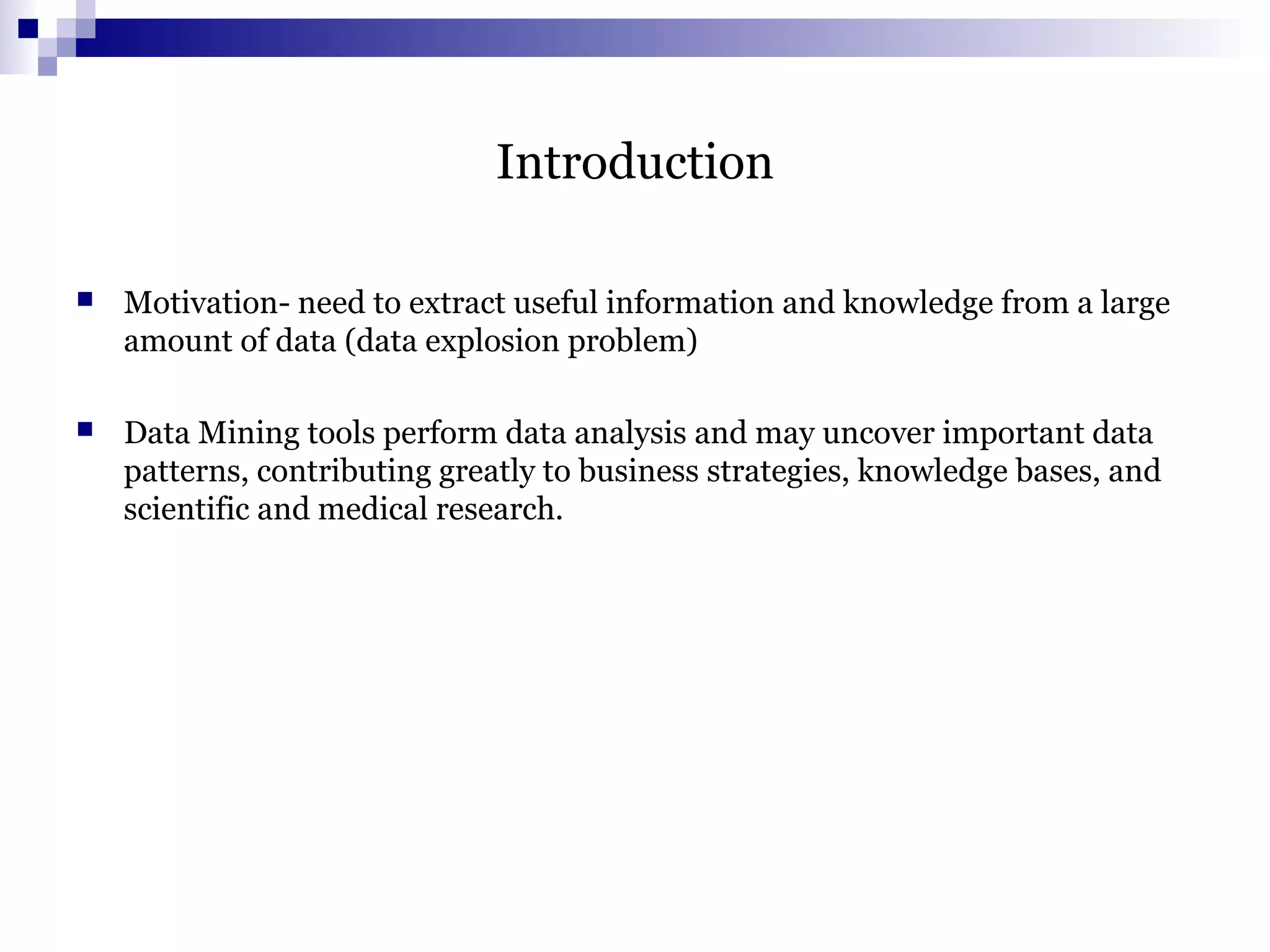

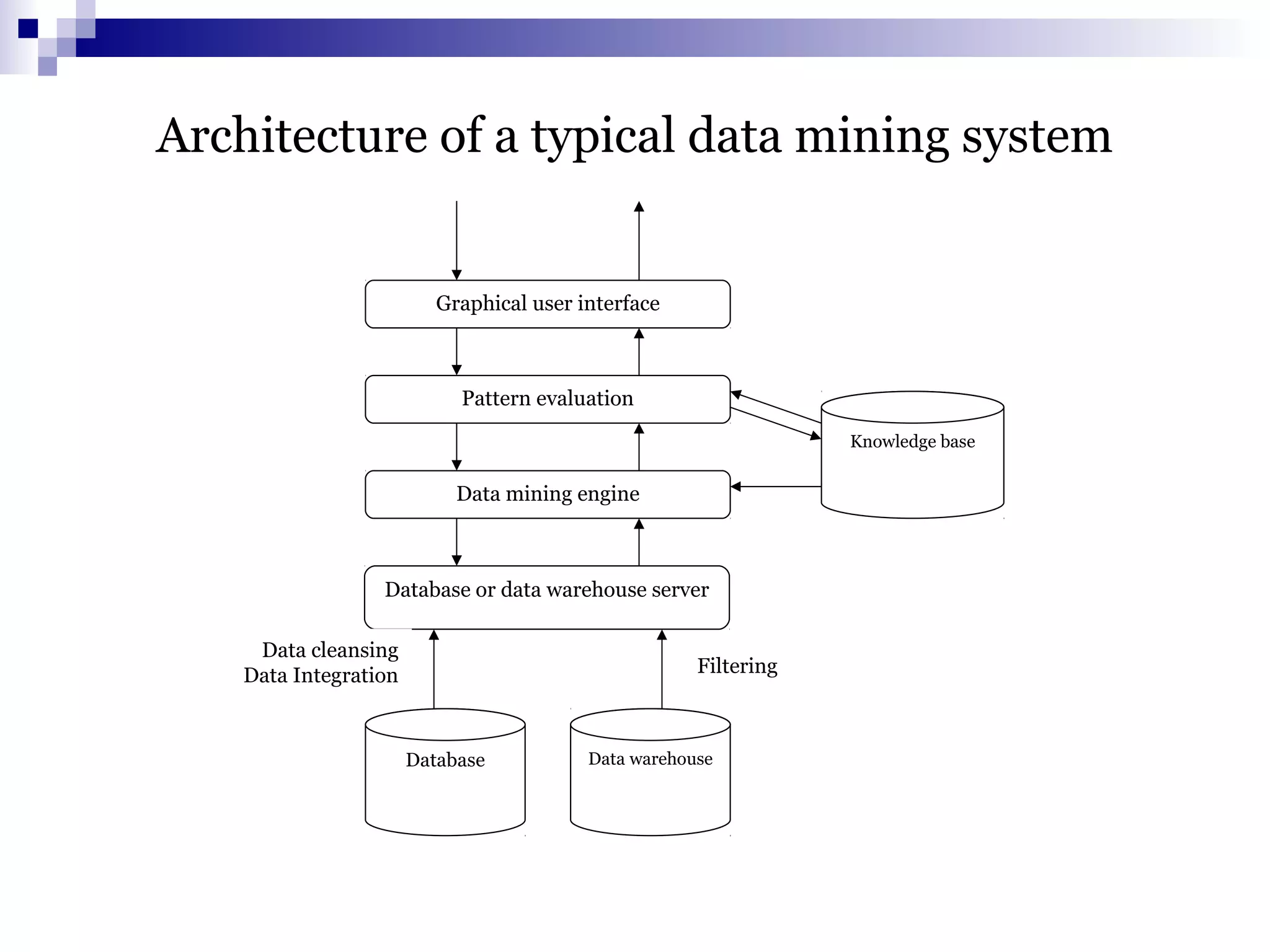
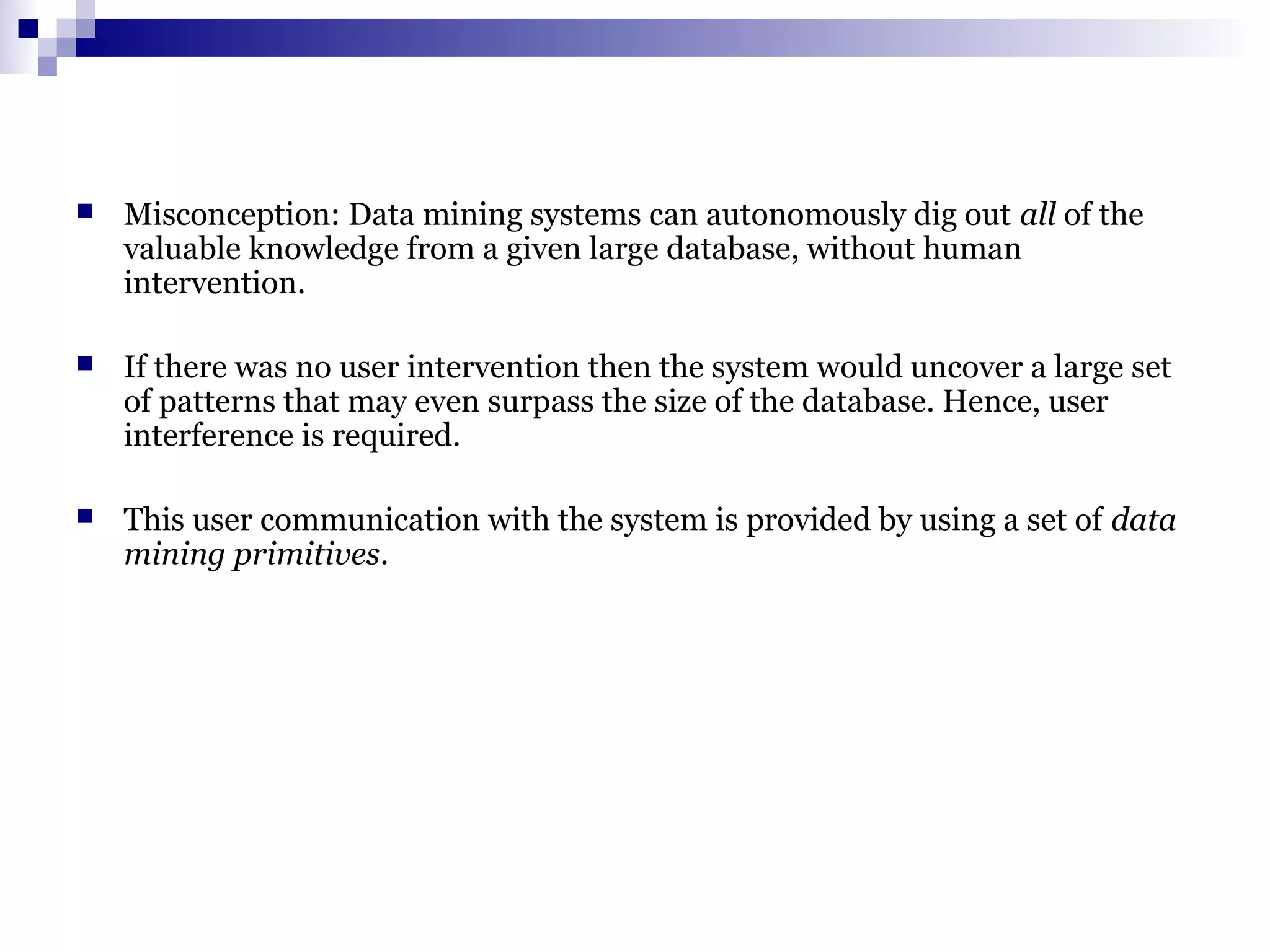
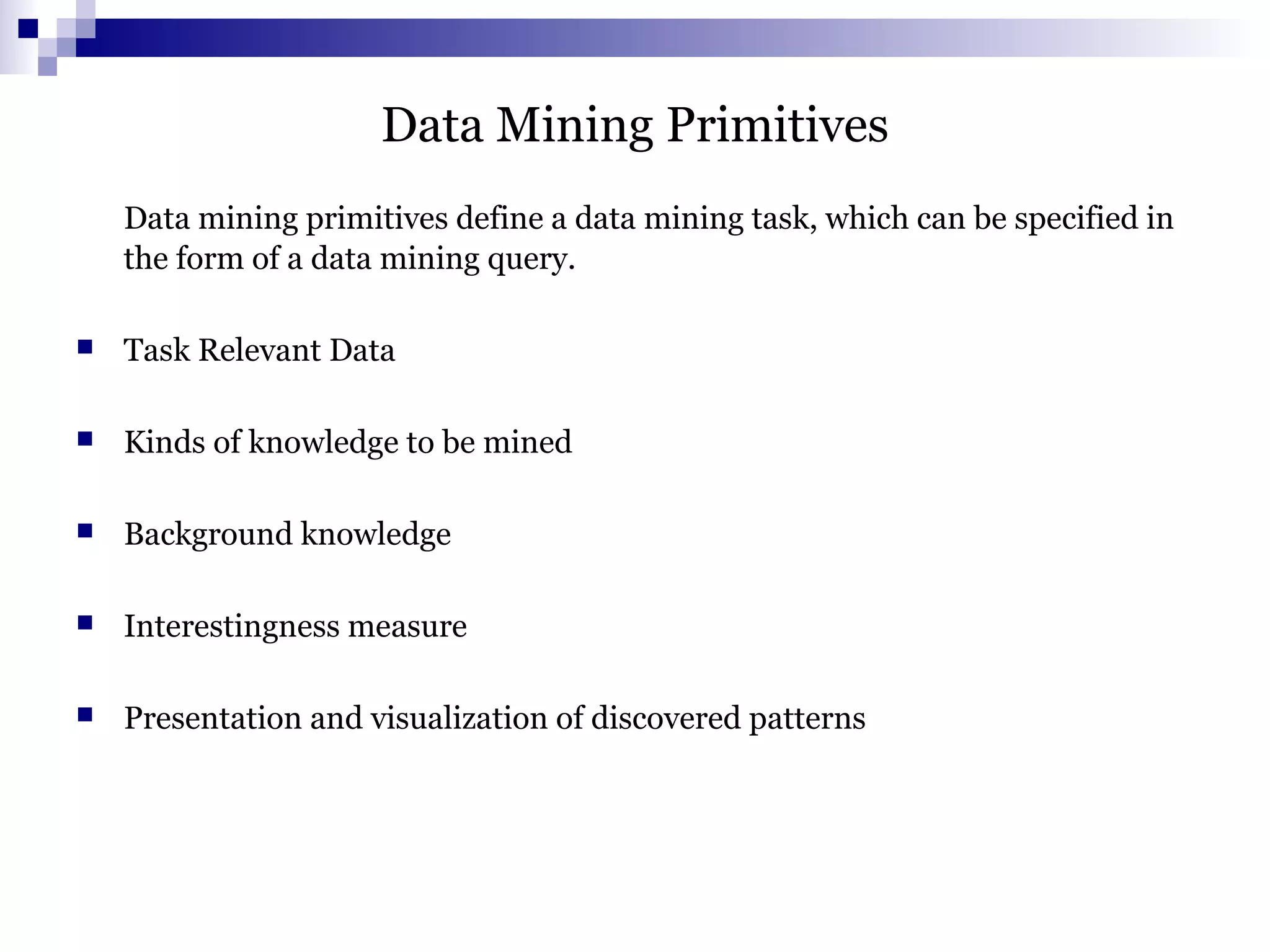
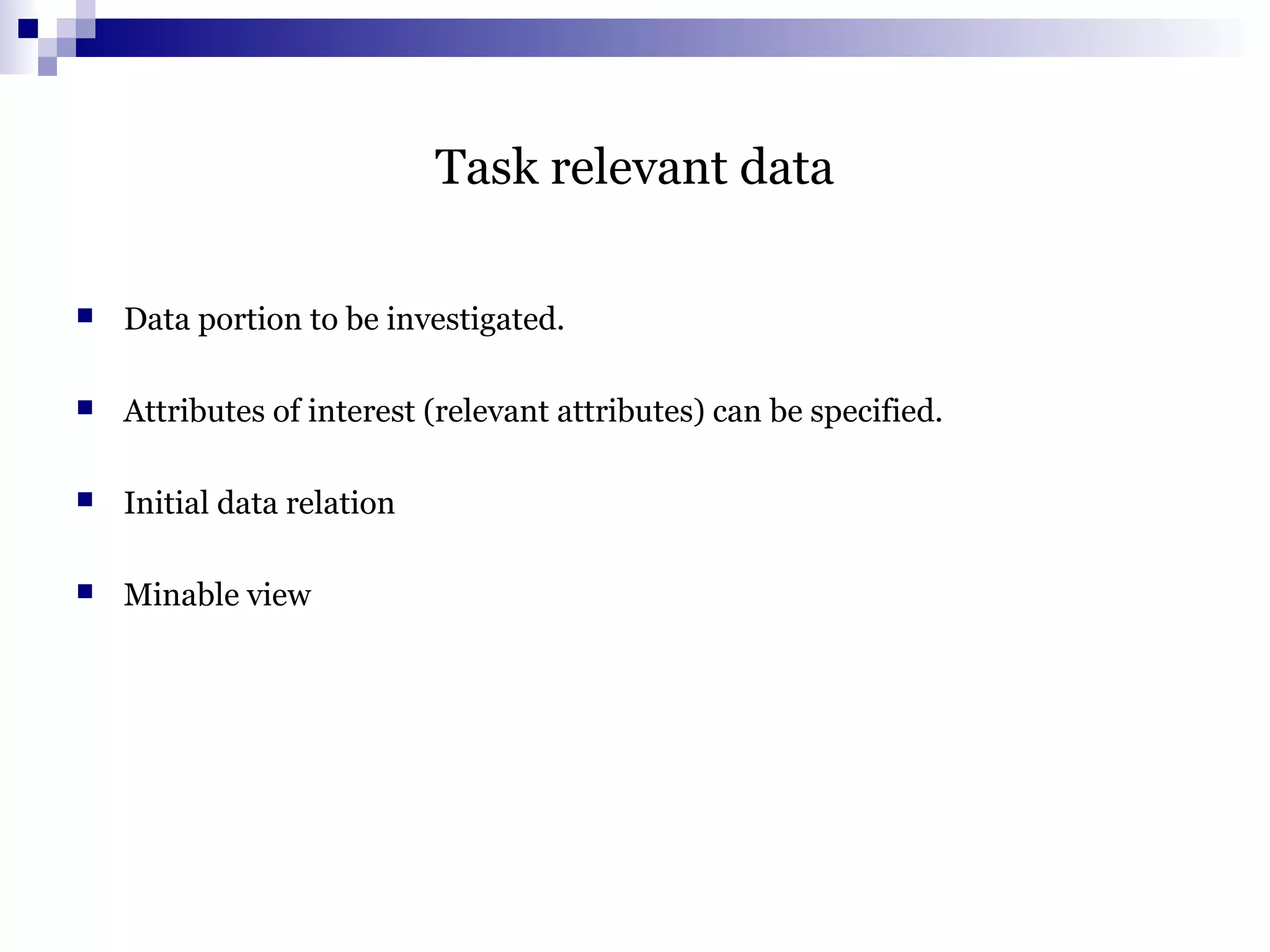

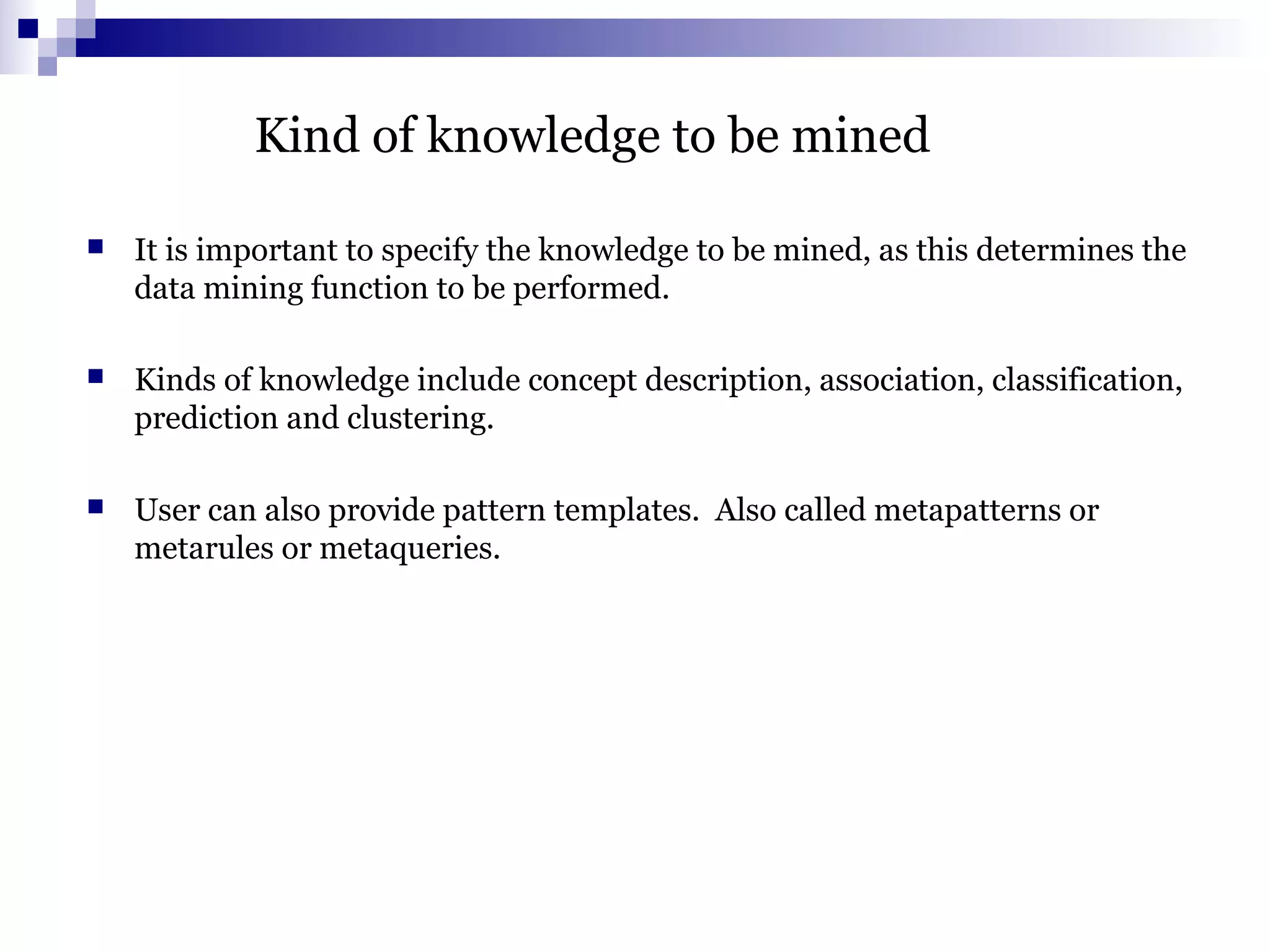
![Example
A user studying the buying habits of allelectronics customers may
choose to mine association rules of the form:
P (X:customer,W) ^ Q (X,Y) => buys (X,Z)
Meta rules such as the following can be specified:
age (X, “30…..39”) ^ income (X, “40k….49K”) => buys (X, “VCR”)
[2.2%, 60%]
occupation (X, “student ”) ^ age (X, “20…..29”)=> buys (X, “computer”)
[1.4%, 70%]](https://image.slidesharecdn.com/data-mining-2-150126031033-conversion-gate01/75/Data-mining-2-12-2048.jpg)
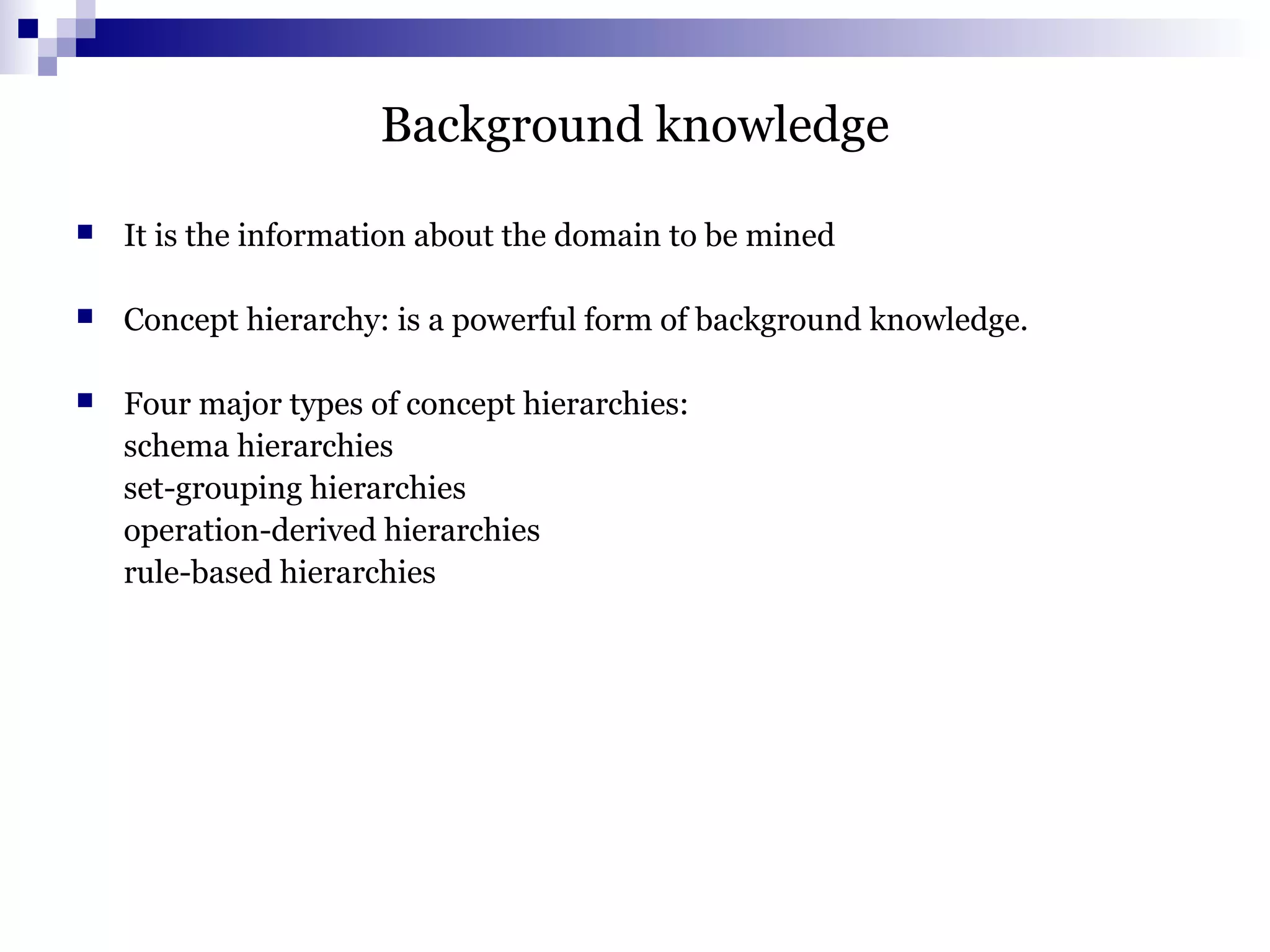
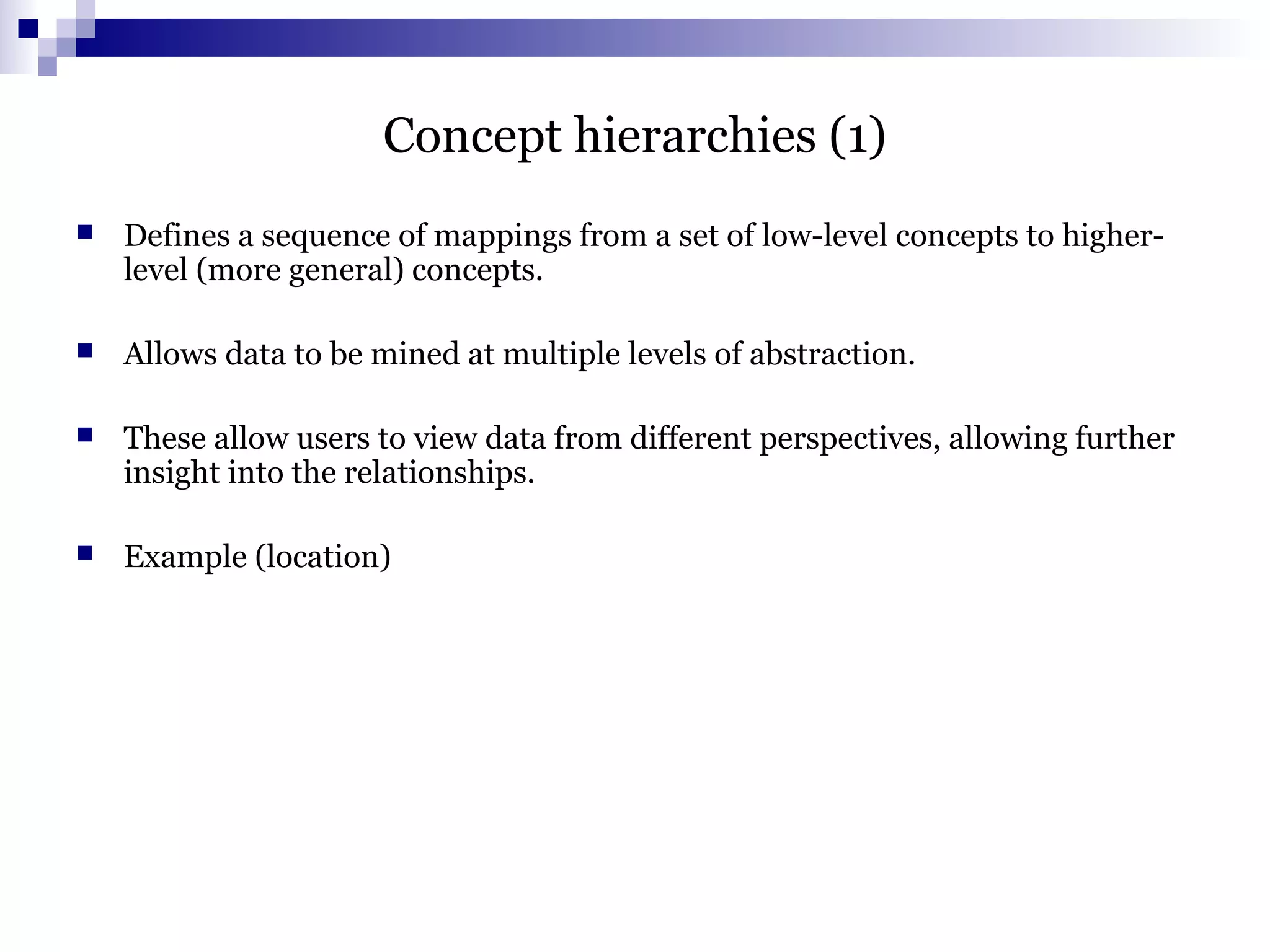
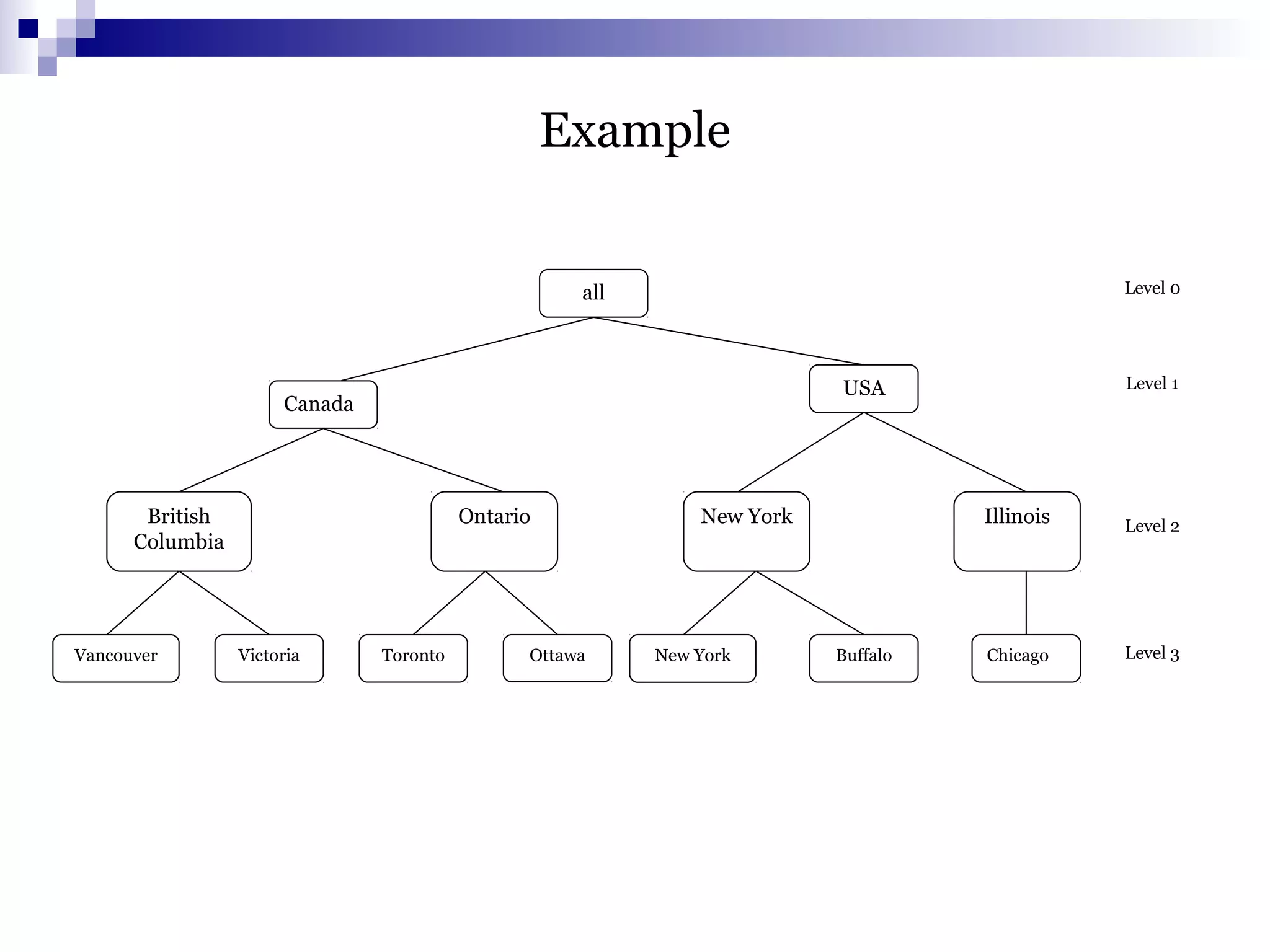

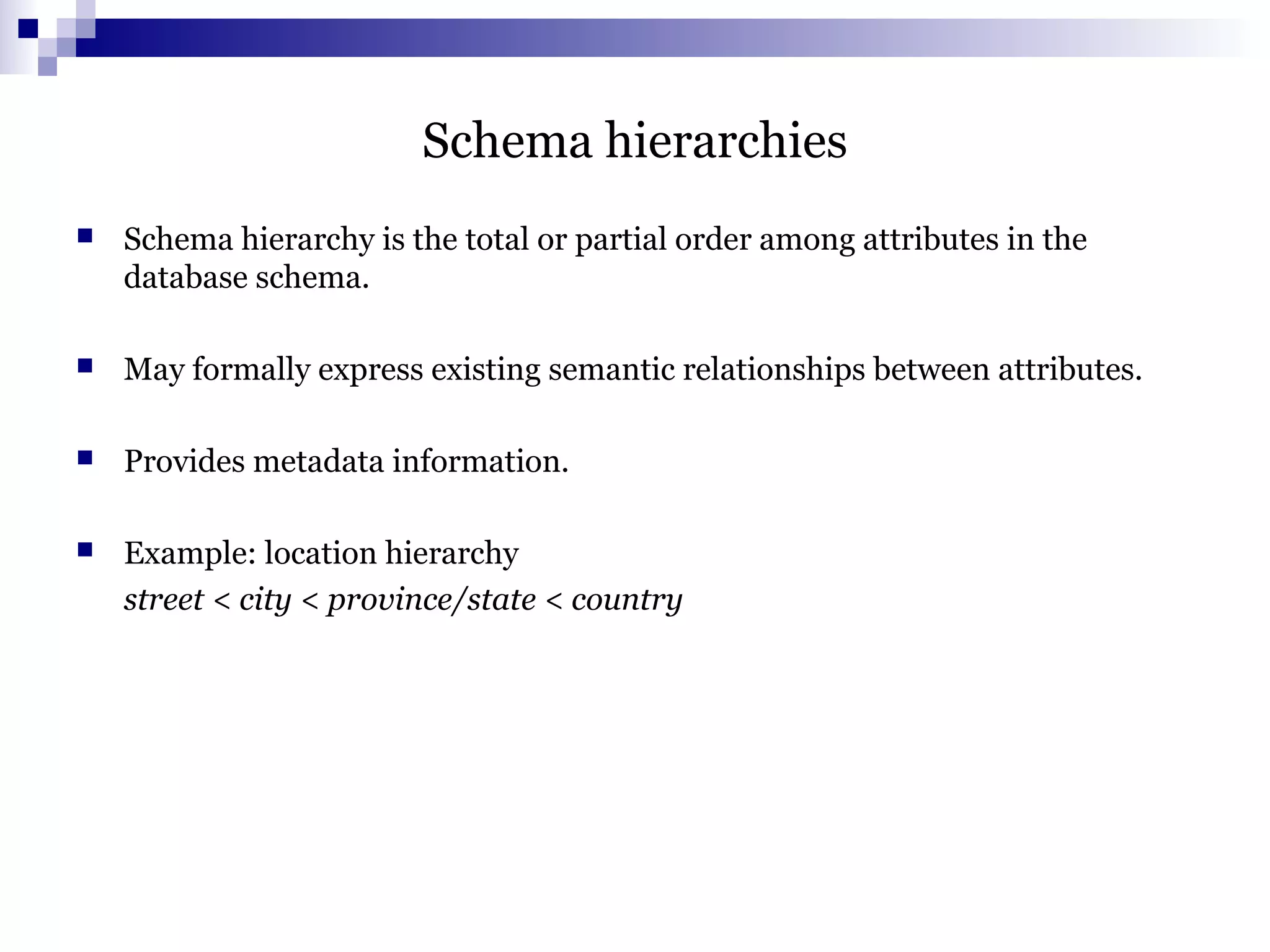

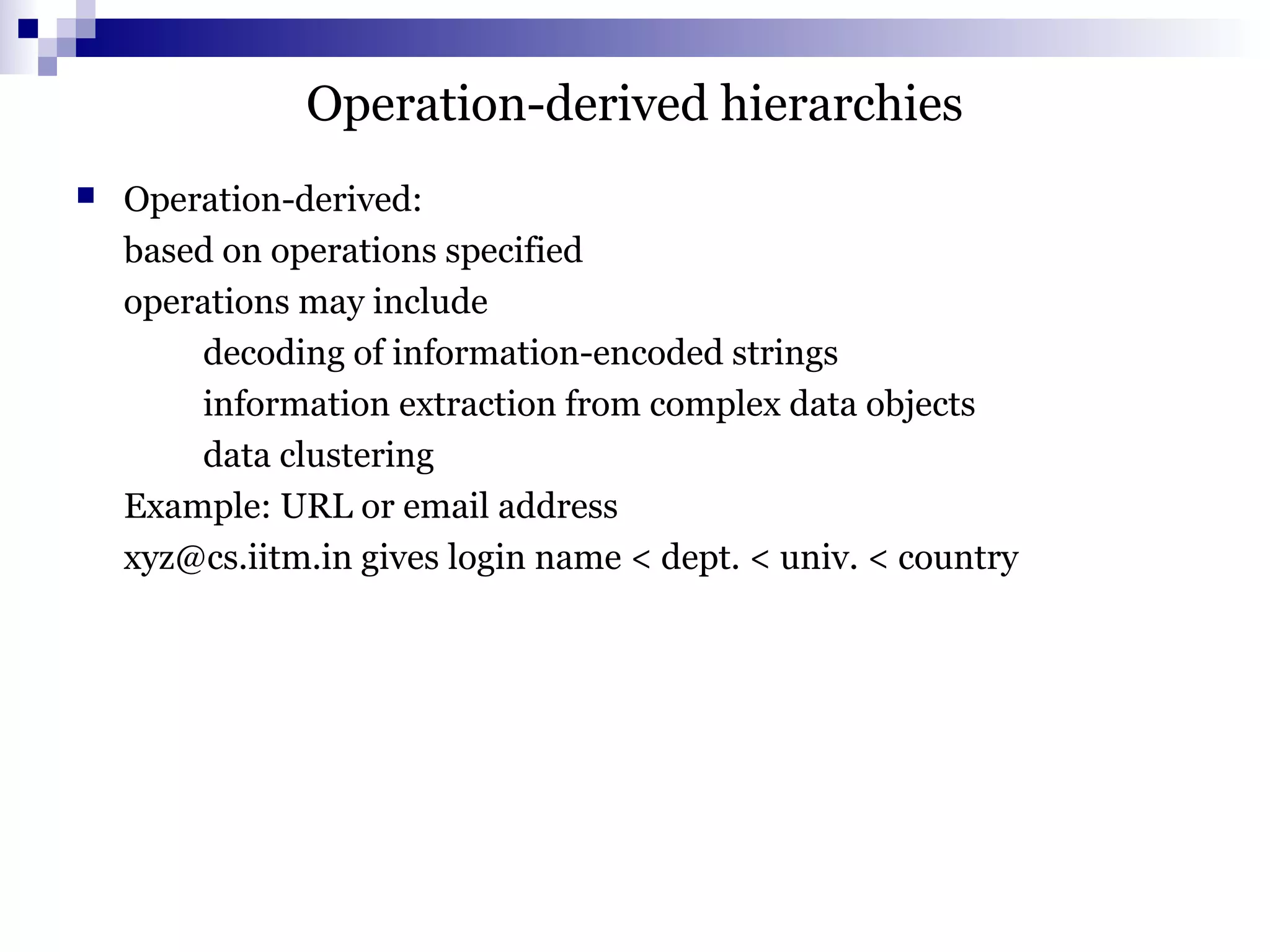
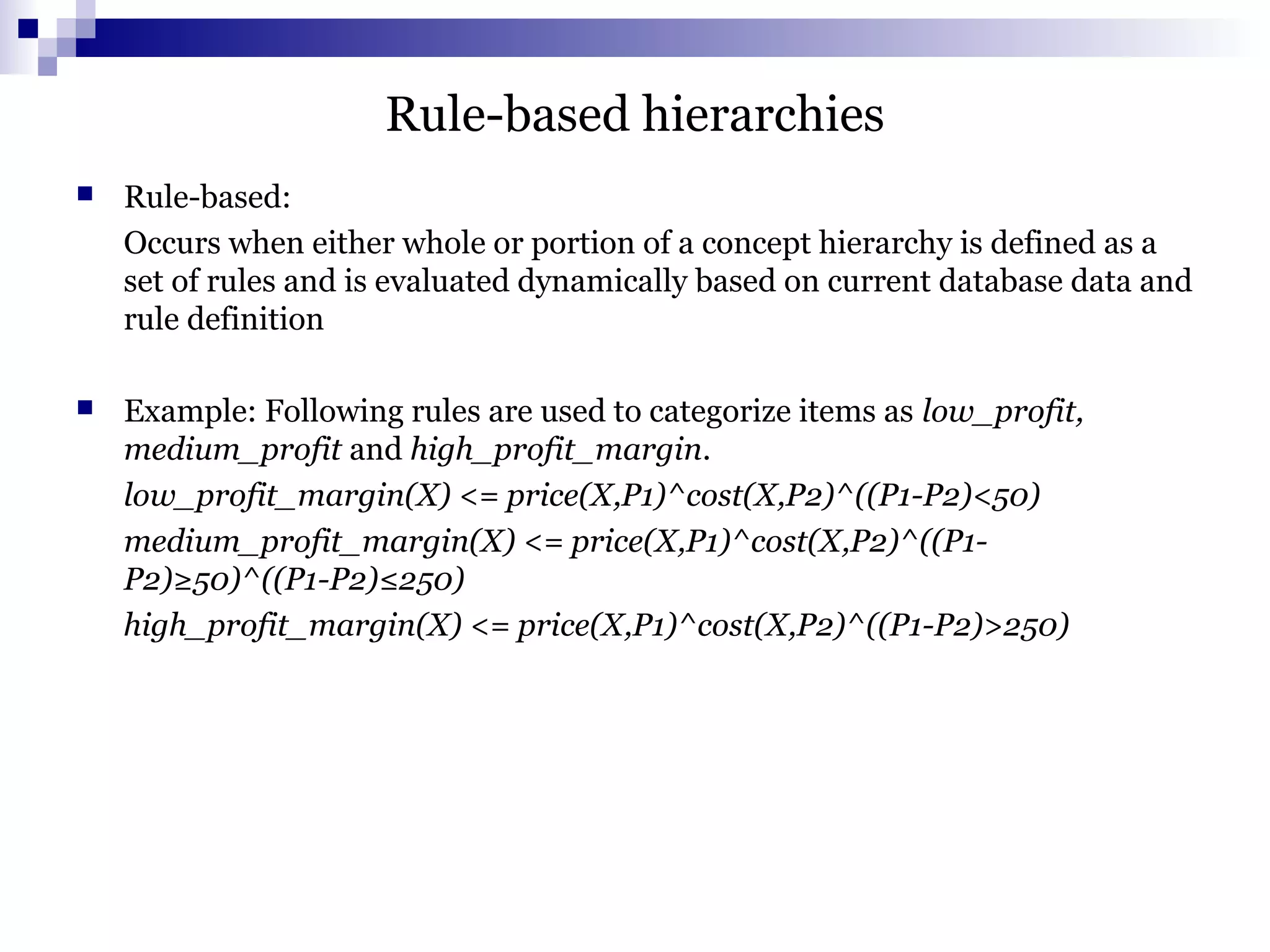
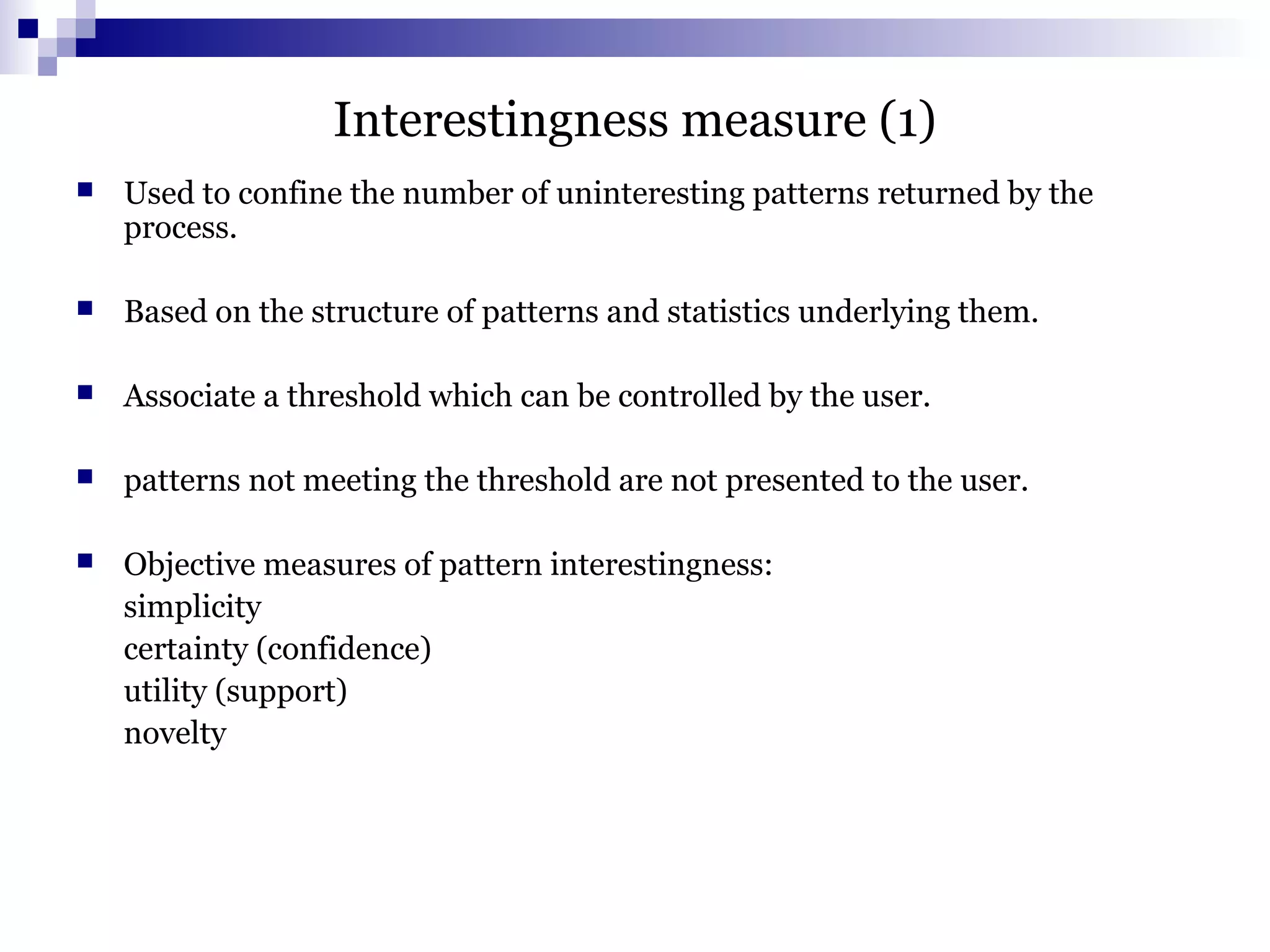
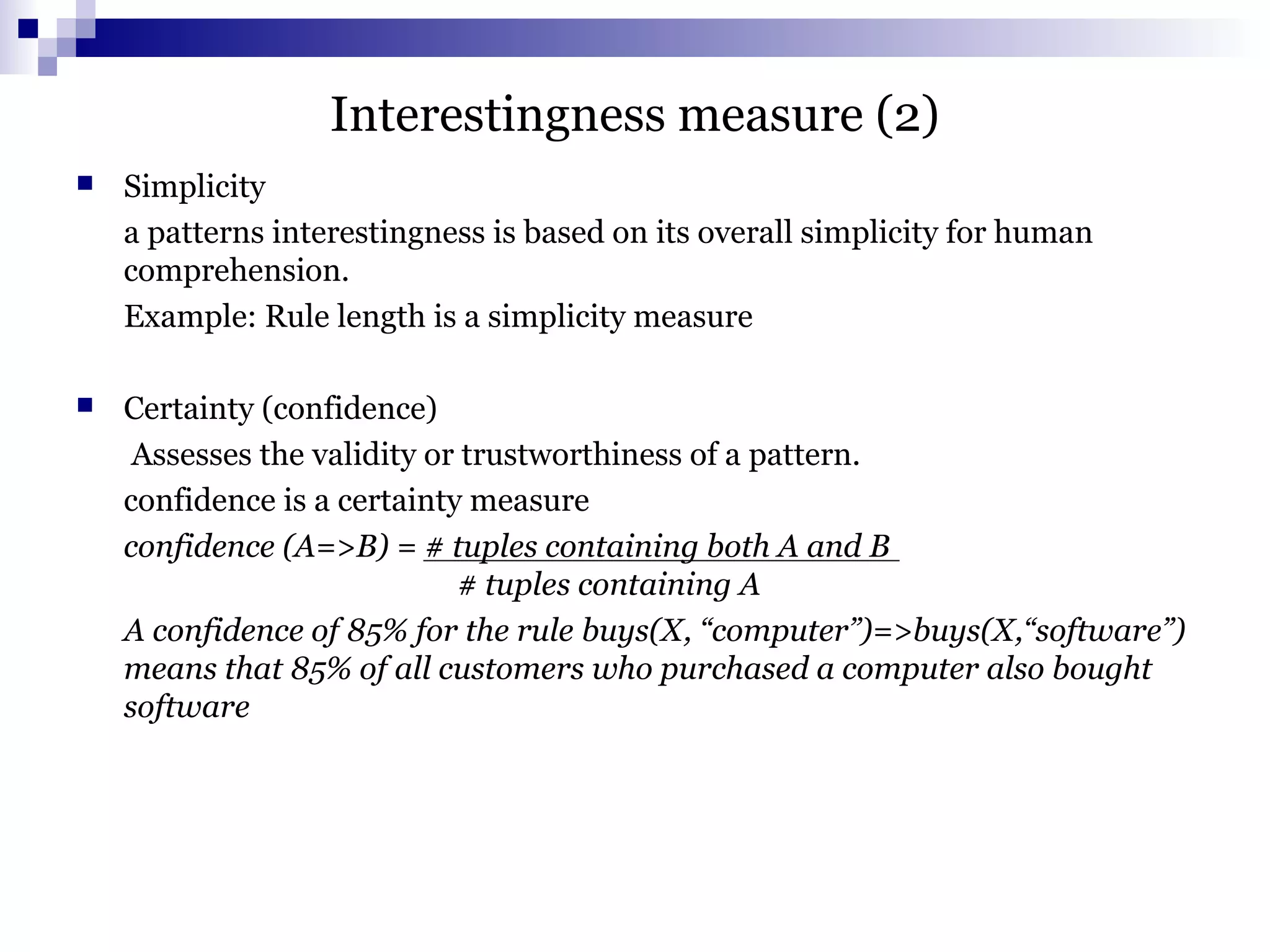
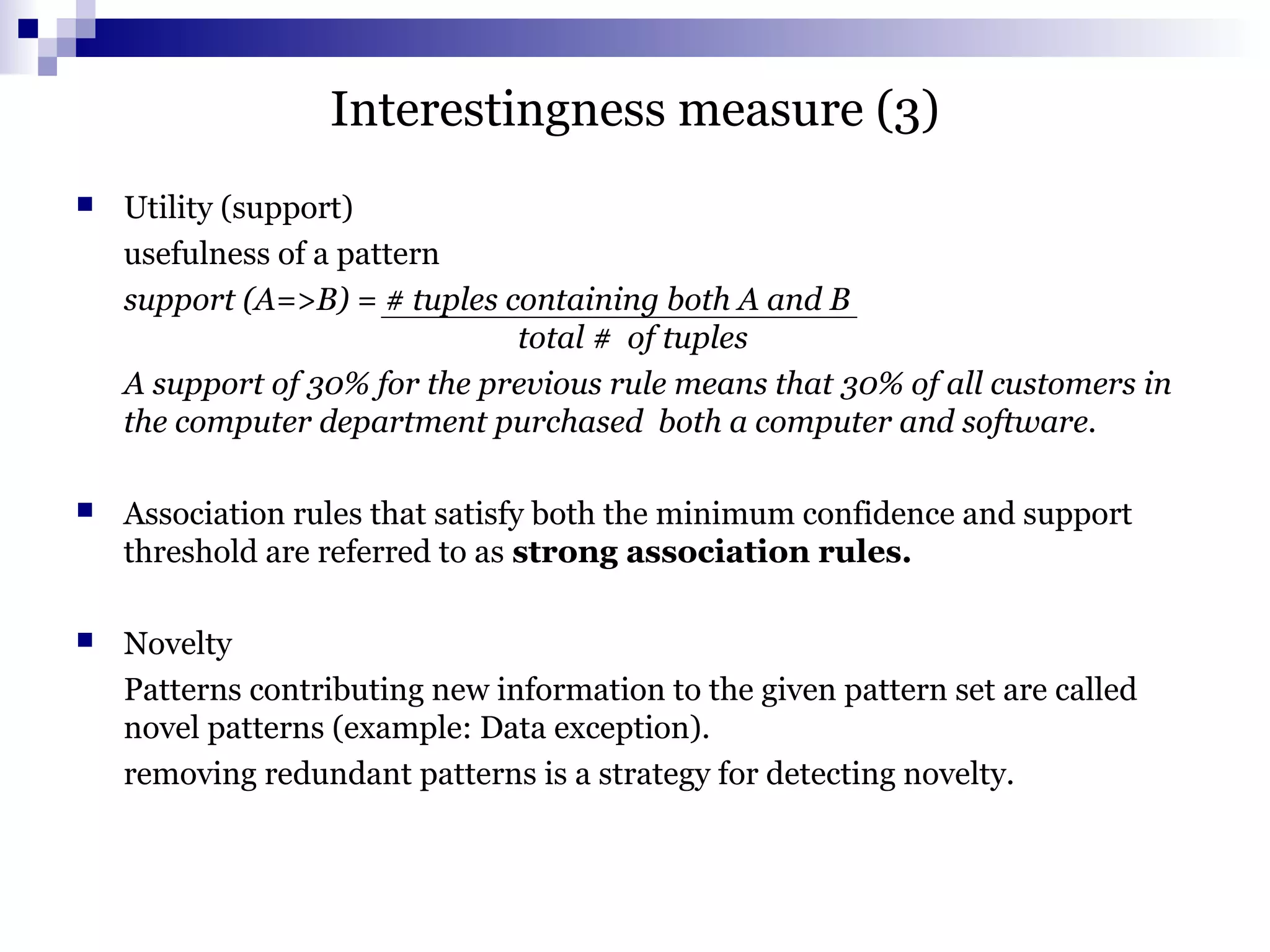

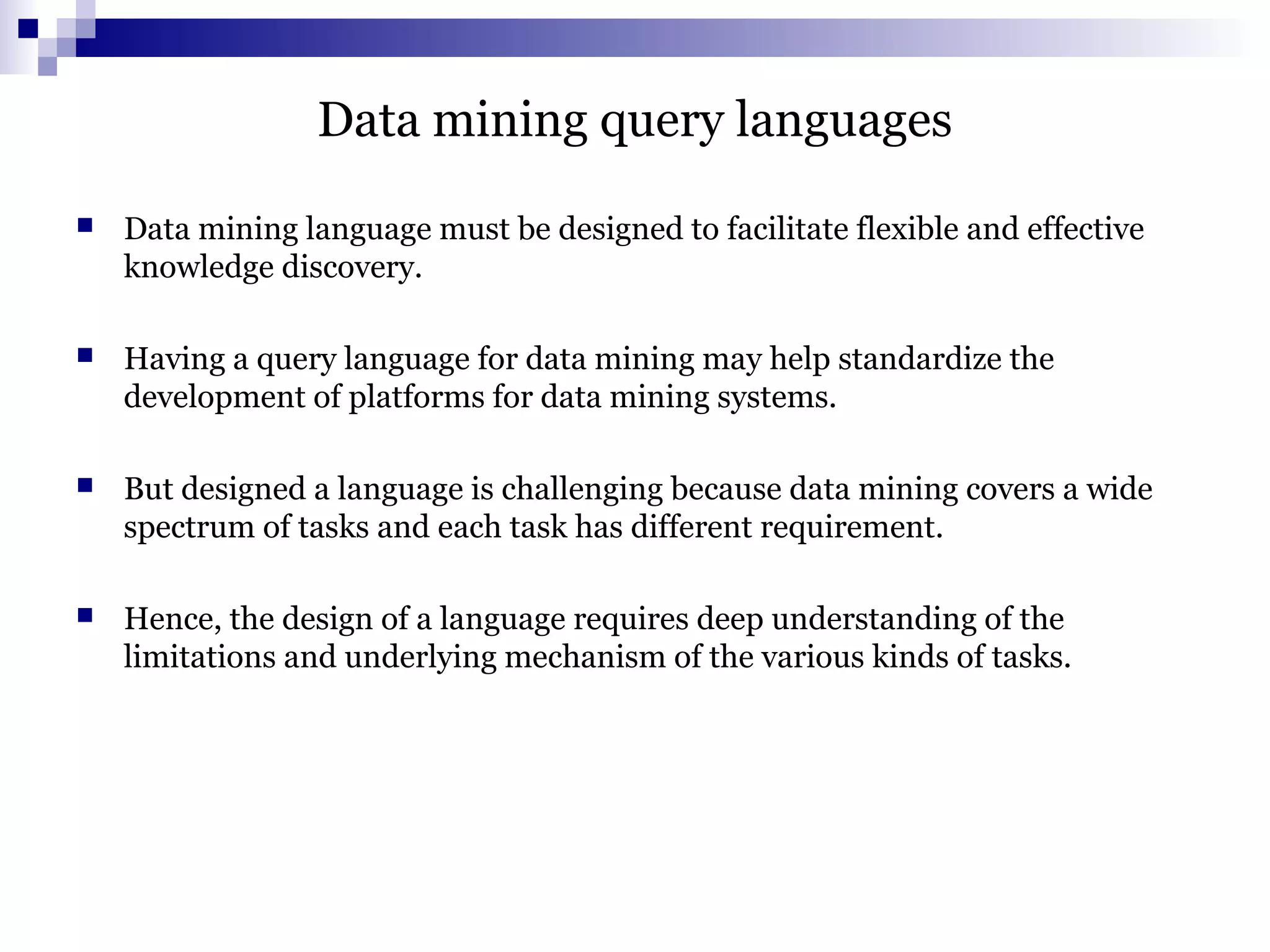
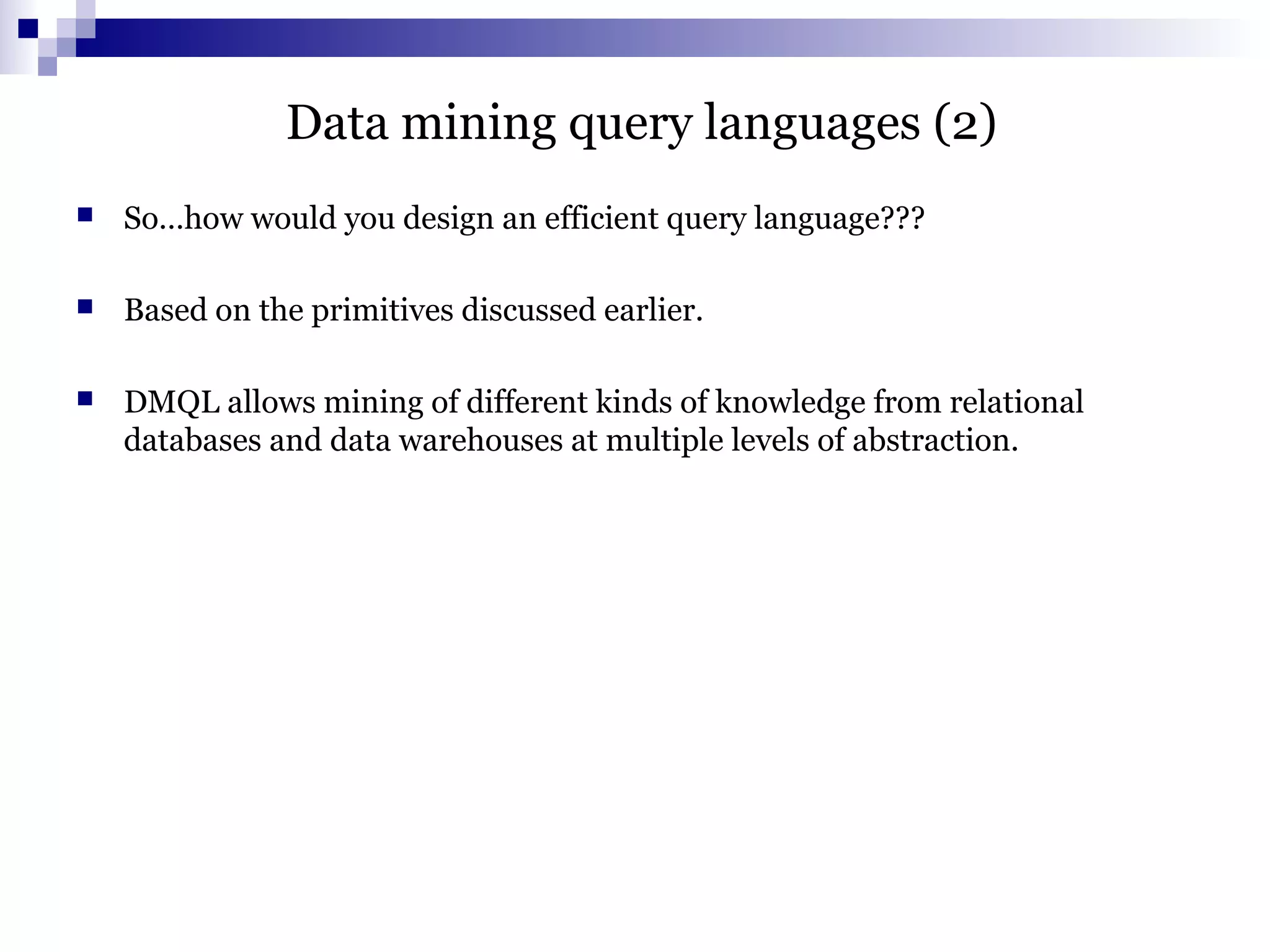
![DMQL
Adopts SQL-like syntax
Hence, can be easily integrated with relational query languages
Defined in BNF grammar
[ ] represents 0 or one occurrence
{ } represents 0 or more occurrences
Words in sans serif represent keywords](https://image.slidesharecdn.com/data-mining-2-150126031033-conversion-gate01/75/Data-mining-2-27-2048.jpg)
![DMQL-Syntax for task-relevant data specification
Names of the relevant database or data warehouse, conditions and relevant
attributes or dimensions must be specified
use database ‹database_name› or use data warehouse ‹data_warehouse_name›
from ‹relation(s)/cube(s)› [where condition]
in relevance to ‹attribute_or_dimension_list›
order by ‹order_list›
group by ‹grouping_list›
having ‹condition›](https://image.slidesharecdn.com/data-mining-2-150126031033-conversion-gate01/75/Data-mining-2-28-2048.jpg)
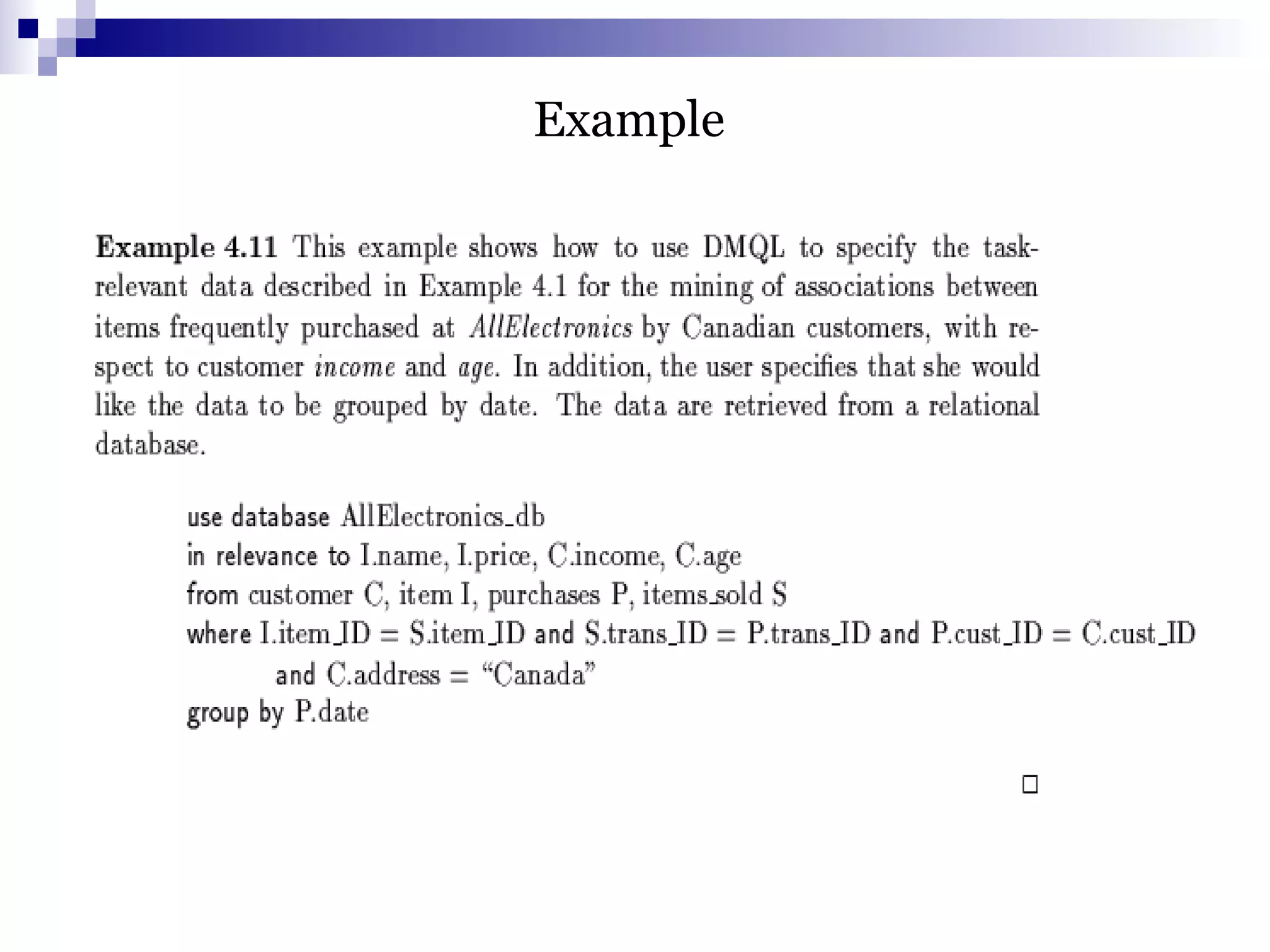
![Syntax for Kind of Knowledge to be Mined
Characterization :
‹Mine_Knowledge_Specification› ::=
mine characteristics [as ‹pattern_name›]
analyze ‹measure(s)›
Example:
mine characteristics as customerPurchasing analyze count%
Discrimination:
‹Mine_Knowledge_Specification› ::=
mine comparison [as ‹ pattern_name›]
for ‹target_class› where ‹target_condition›
{versus ‹contrast_class_i where ‹contrast_condition_i›}
analyze ‹measure(s)›
Example:
Mine comparison as purchaseGroups
for bigspenders where avg(I.price) >= $100
versus budgetspenders where avg(I.price) < $100
analyze count](https://image.slidesharecdn.com/data-mining-2-150126031033-conversion-gate01/75/Data-mining-2-30-2048.jpg)
![Syntax for Kind of Knowledge to be Mined (2)
Association:
‹Mine_Knowledge_Specification› ::=
mine associations [as ‹pattern_name›]
[matching ‹metapattern›]
Example: mine associations as buyingHabits
matching P(X: customer, W) ^ Q(X,Y) => buys (X,Z)
Classification:
‹Mine_Knowledge_Specification› ::=
mine classification [as ‹pattern_name›]
analyze ‹classifying_attribute_or_dimension›
Example: mine classification as classifyCustomerCreditRating
analyze credit_rating](https://image.slidesharecdn.com/data-mining-2-150126031033-conversion-gate01/75/Data-mining-2-31-2048.jpg)
![Syntax for concept hierarchy specification
More than one concept per attribute can be specified
Use hierarchy ‹hierarchy_name› for ‹attribute_or_dimension›
Examples:
Schema concept hierarchy (ordering is important)
define hierarchy location_hierarchy on address as
[street,city,province_or_state,country]
Set-Grouping concept hierarchy
define hierarchy age_hierarchy for age on customer as
level1: {young, middle_aged, senior} < level0: all
level2: {20, ..., 39} < level1: young
level2: {40, ..., 59} < level1: middle_aged
level2: {60, ..., 89} < level1: senior](https://image.slidesharecdn.com/data-mining-2-150126031033-conversion-gate01/75/Data-mining-2-32-2048.jpg)
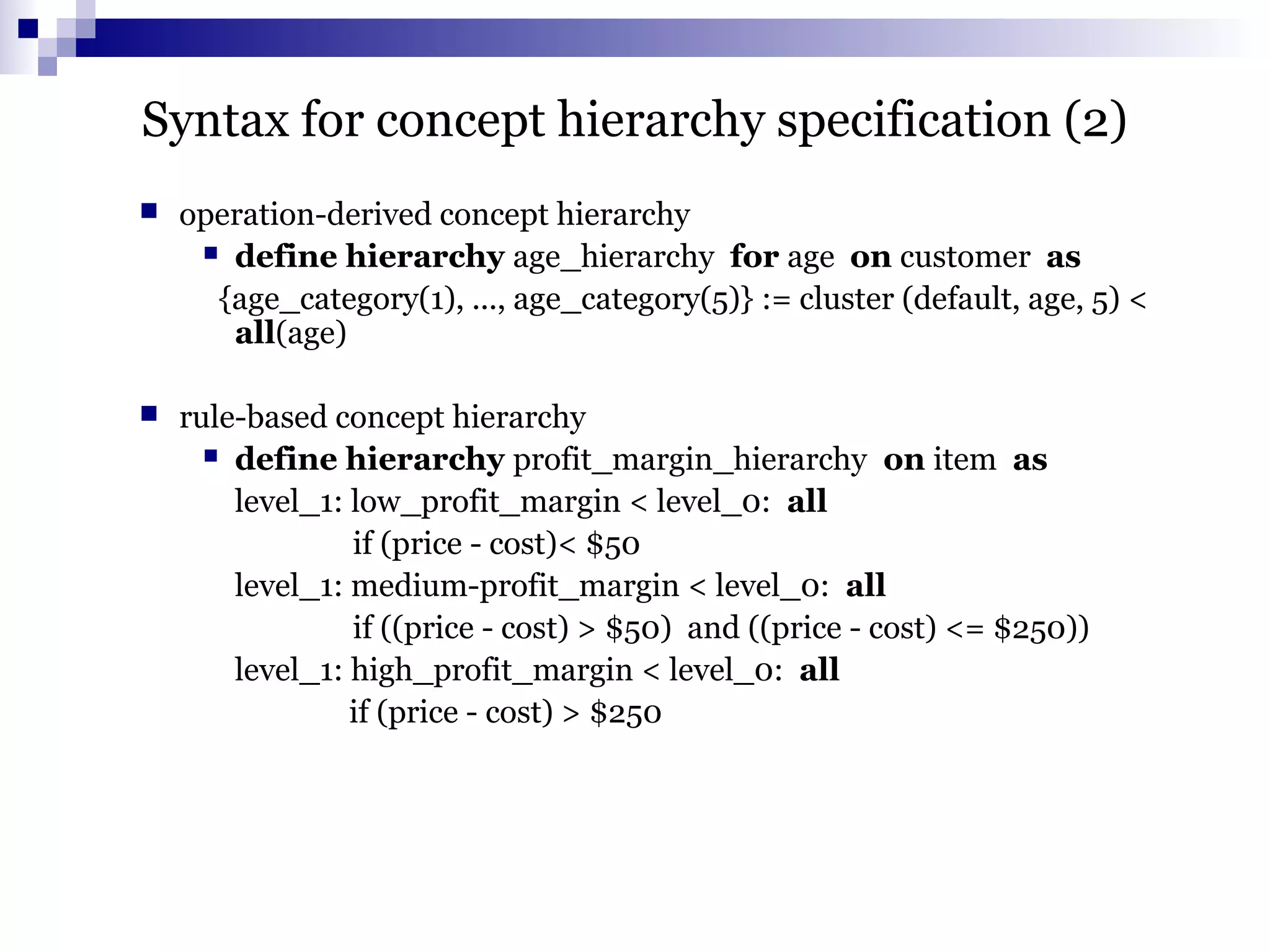
![Syntax for interestingness measure specification
with [‹interest_measure_name›] threshold = ‹threshold_value›
Example:
with support threshold = 5%
with confidence threshold = 70%](https://image.slidesharecdn.com/data-mining-2-150126031033-conversion-gate01/75/Data-mining-2-34-2048.jpg)
